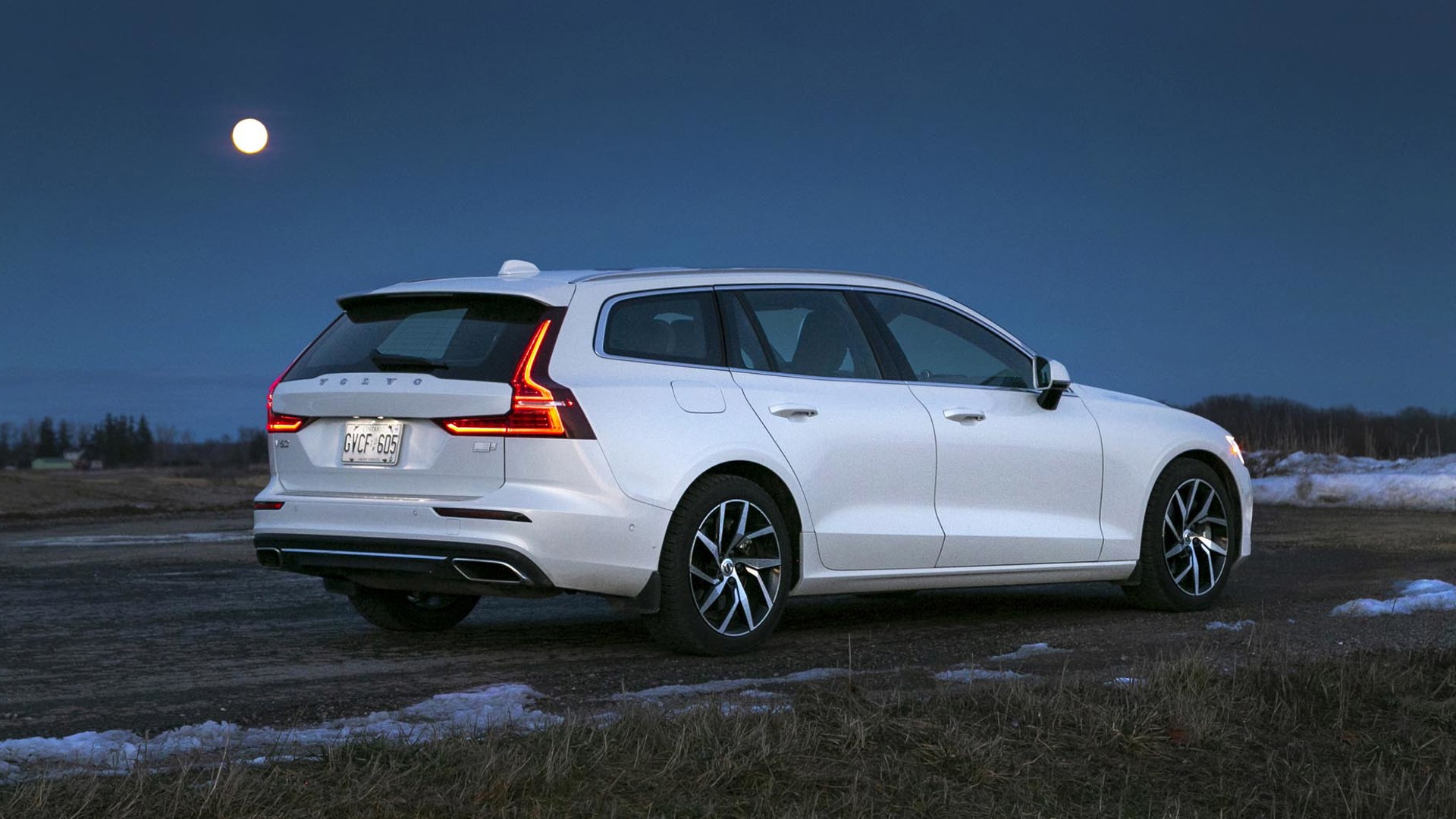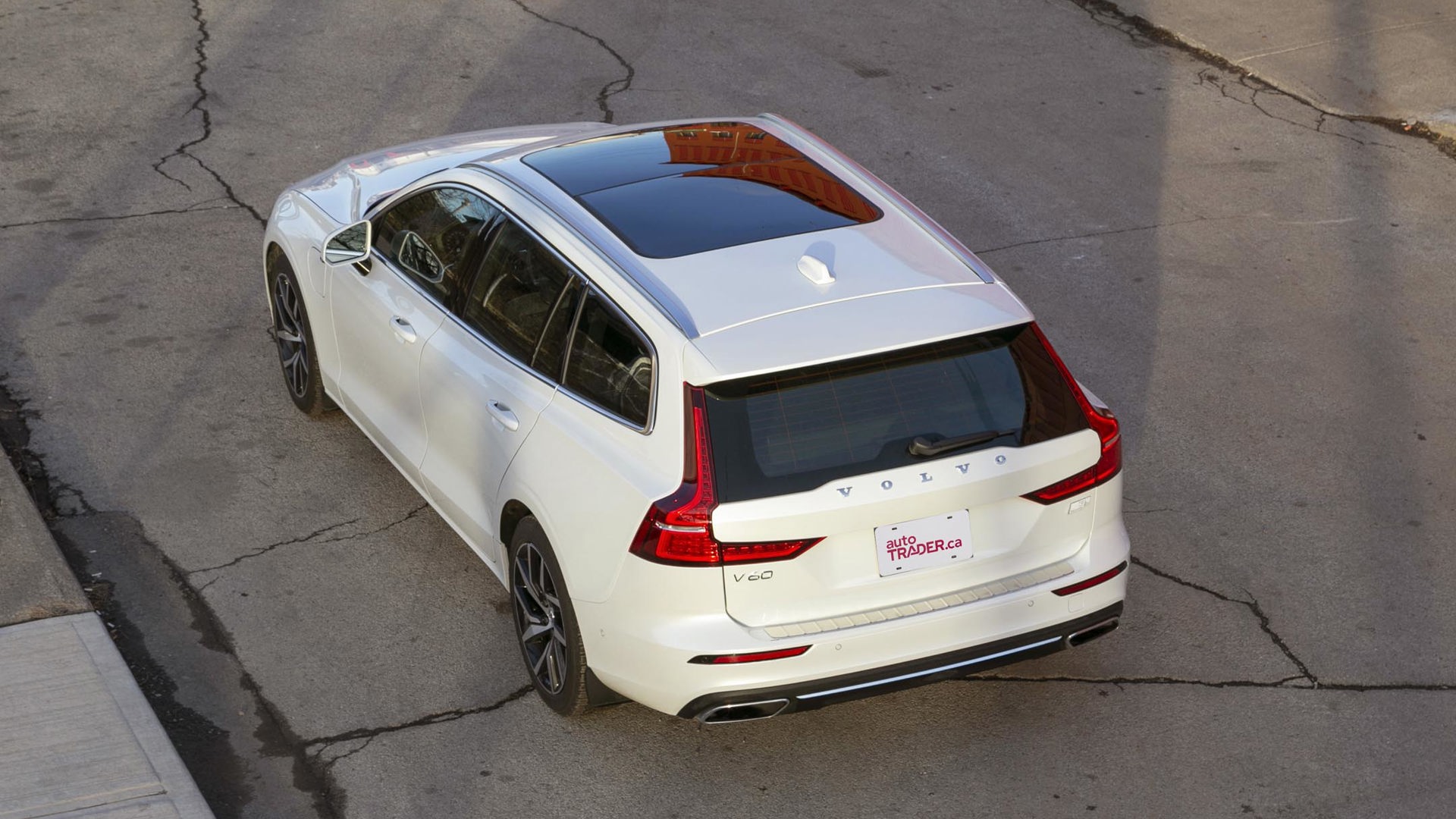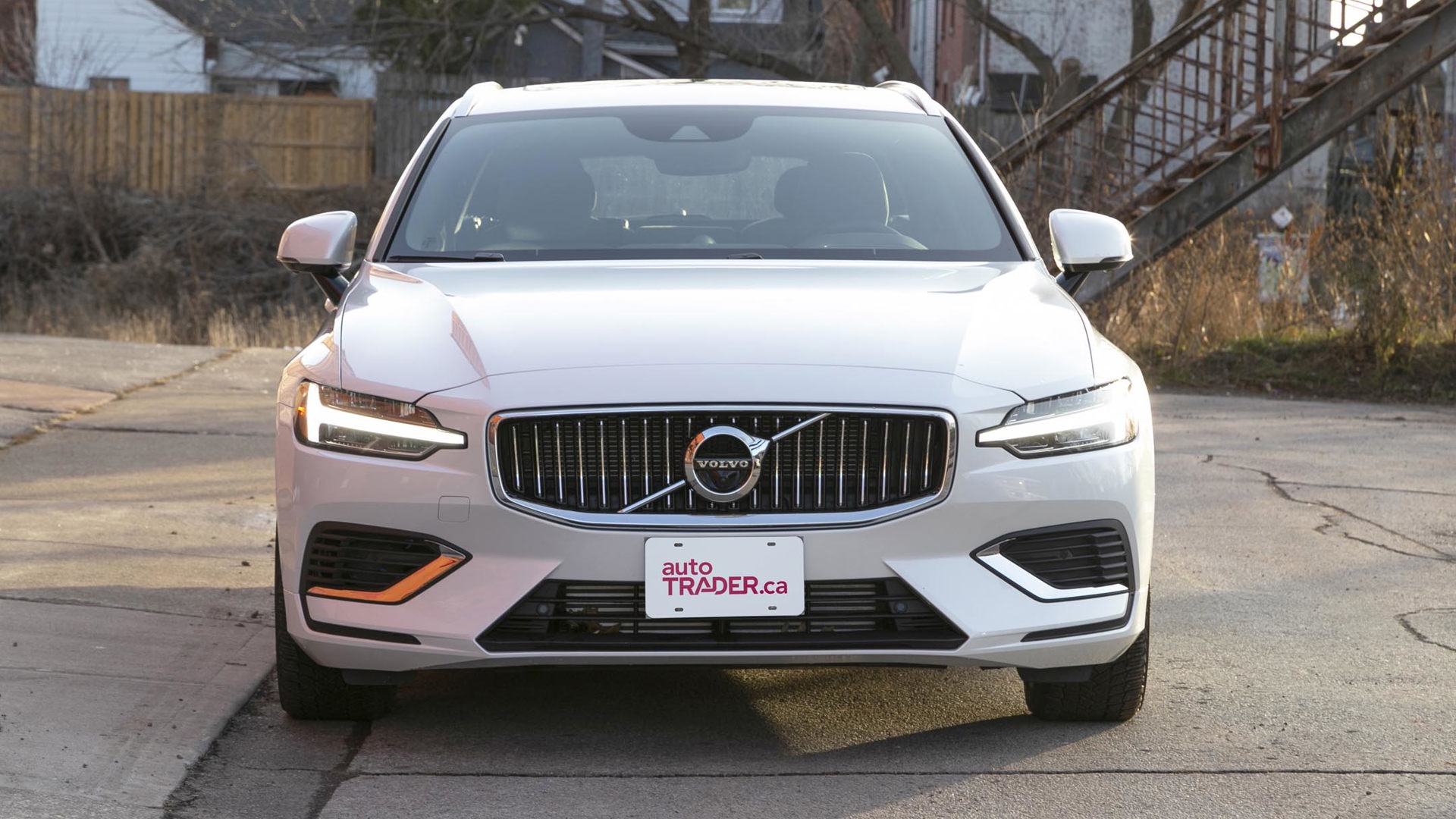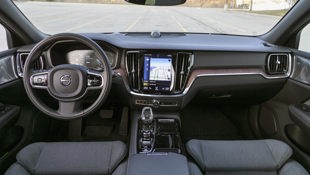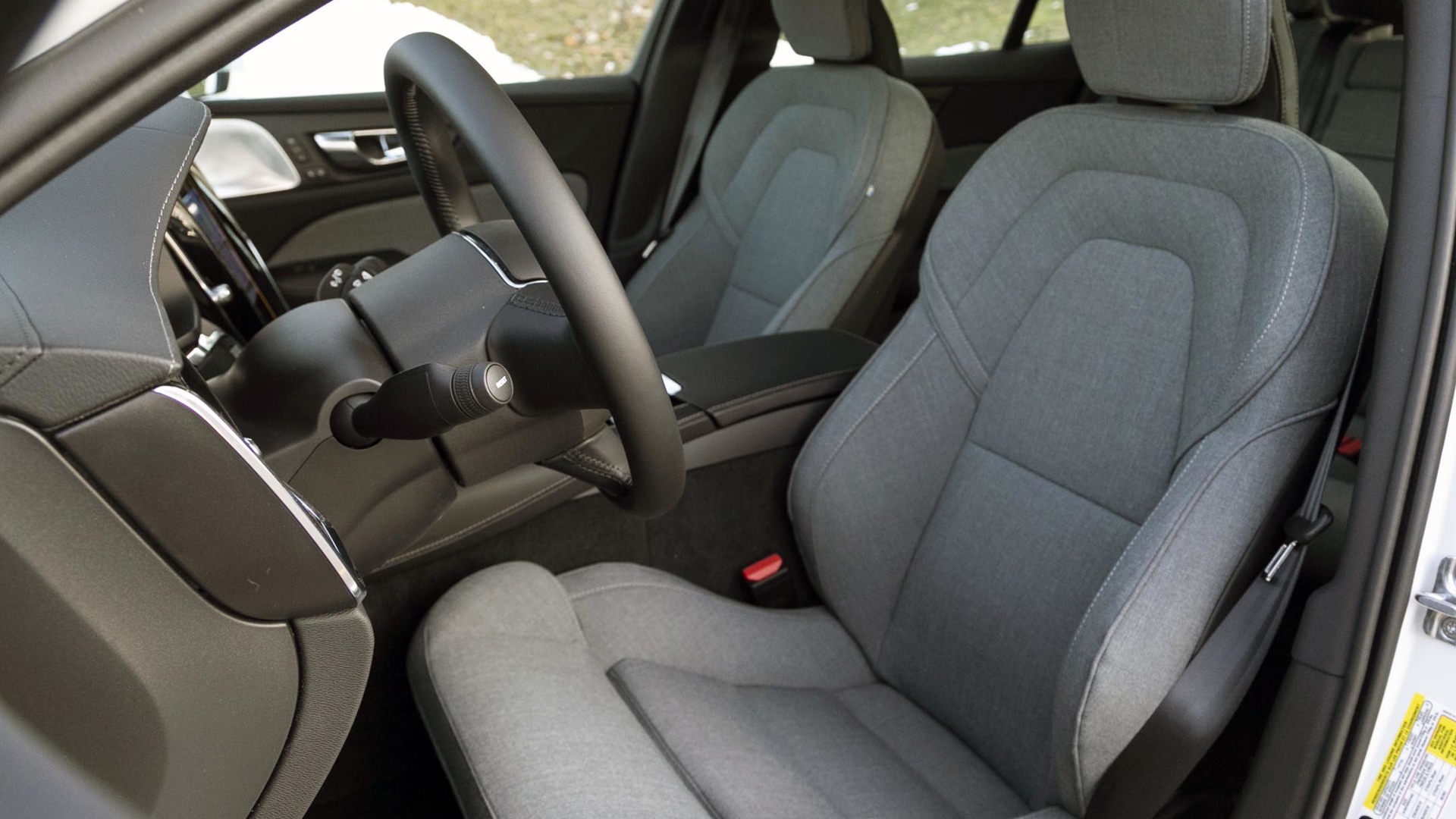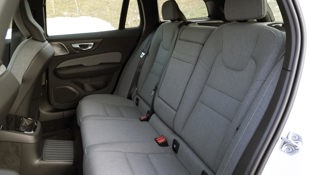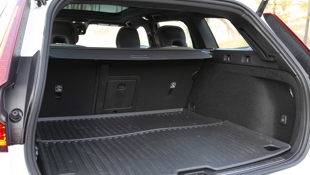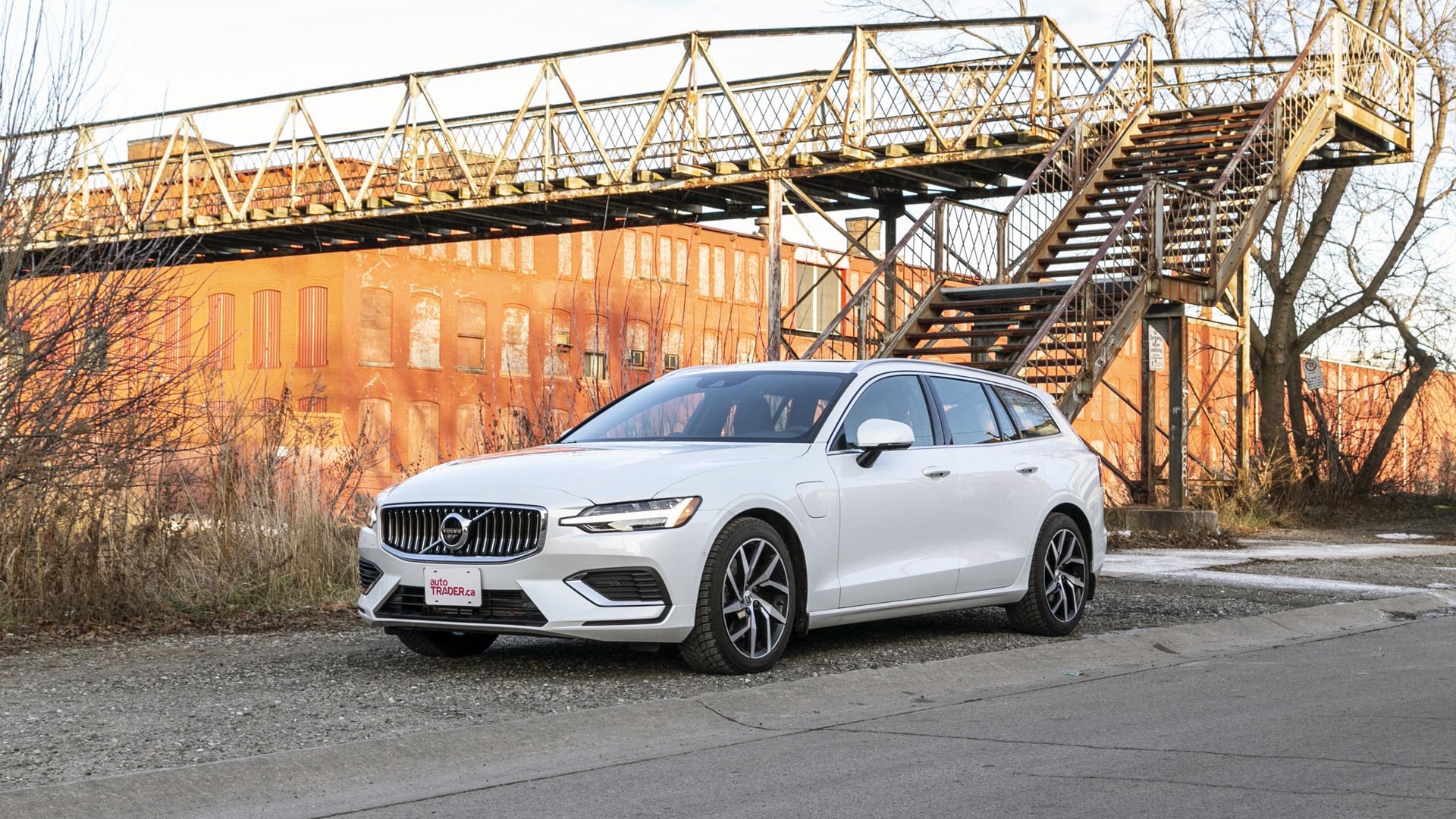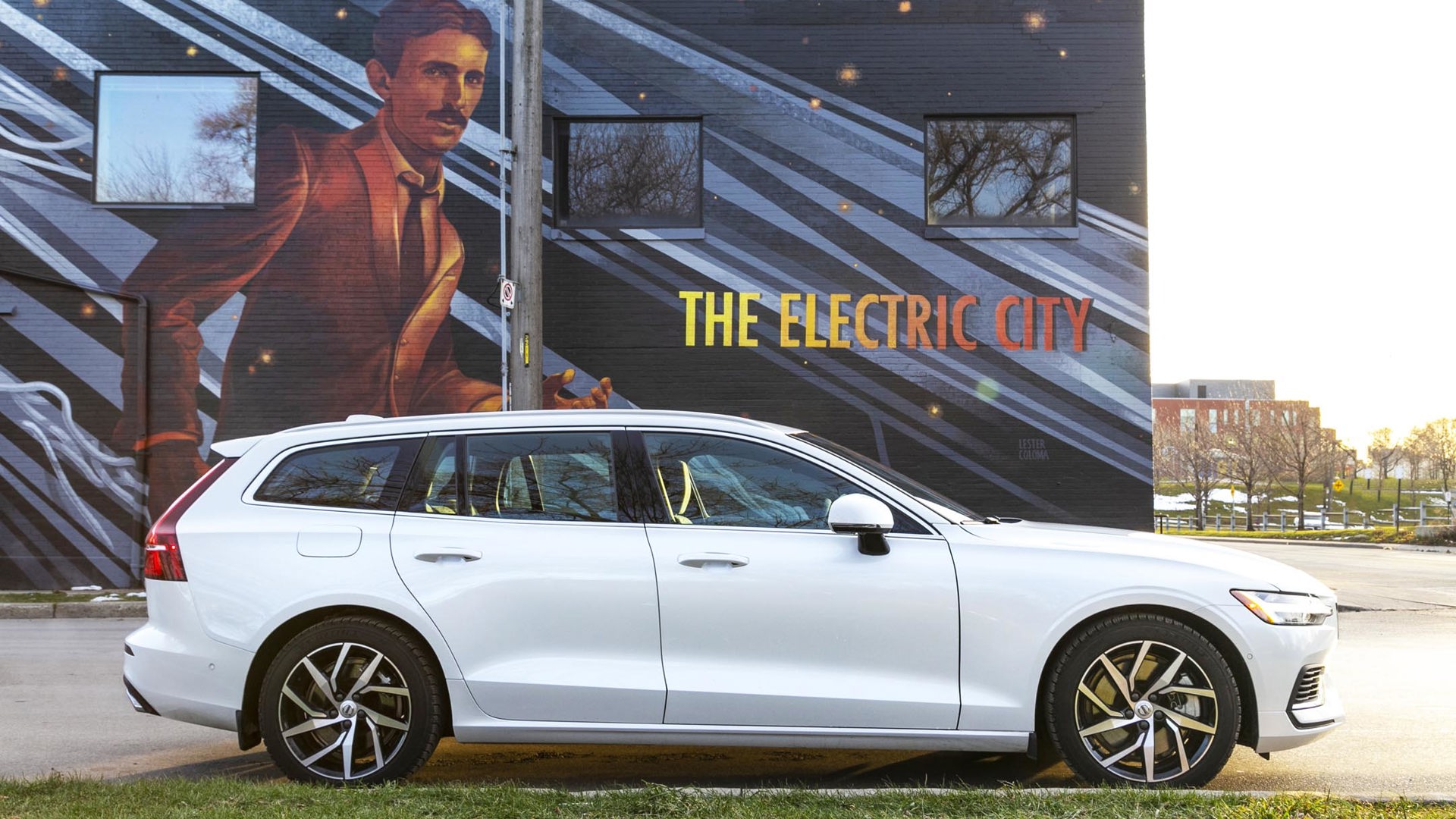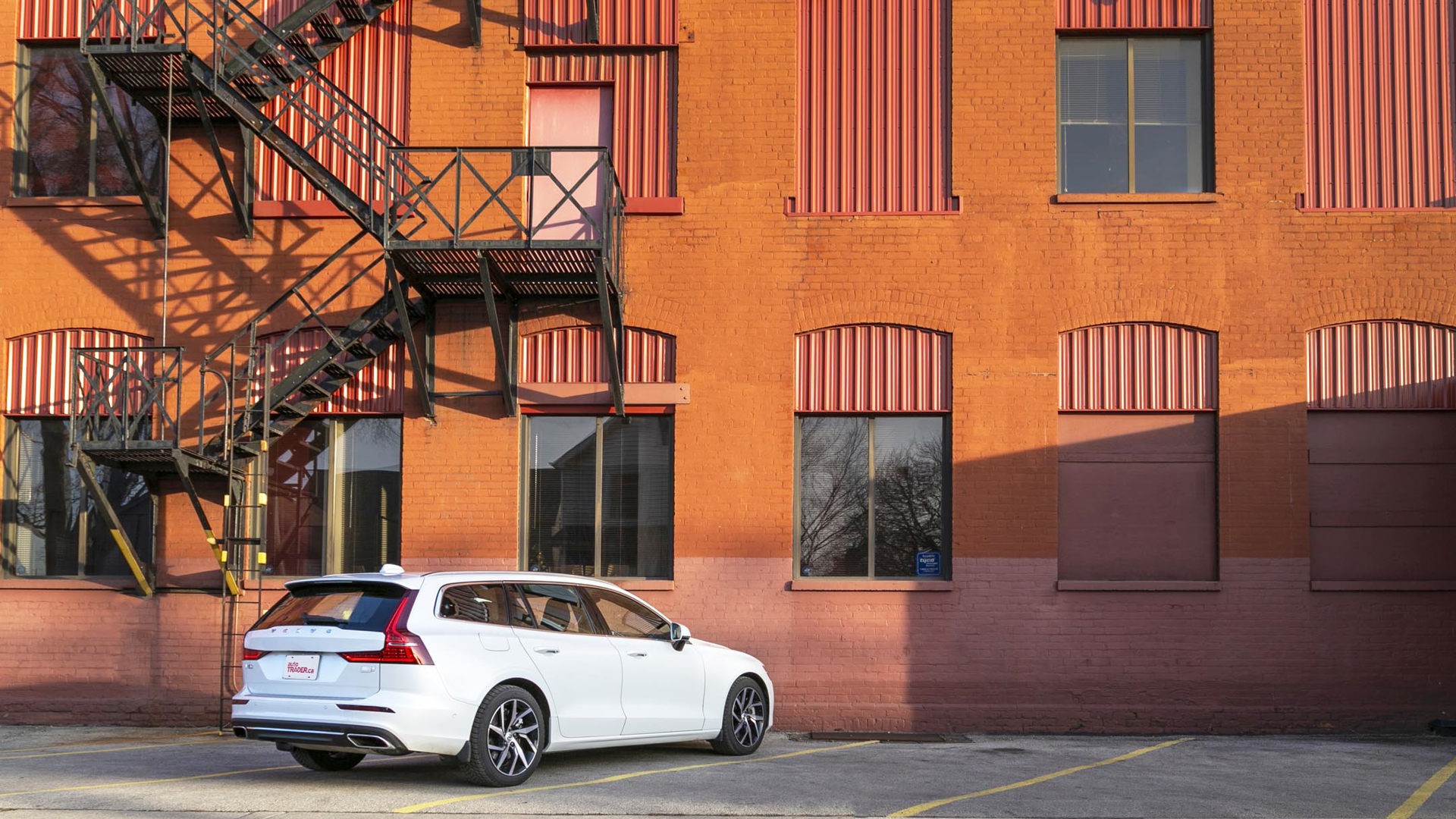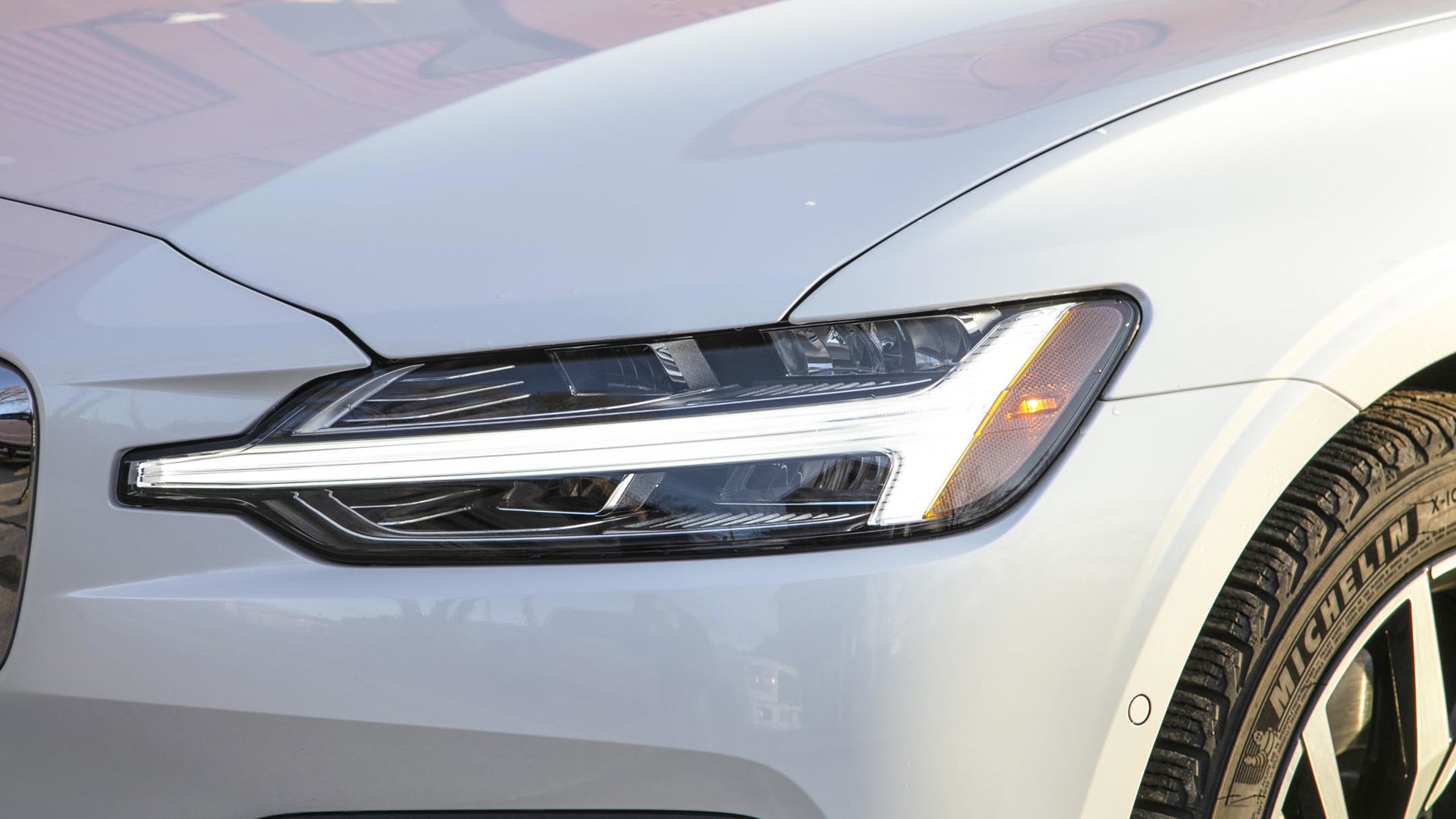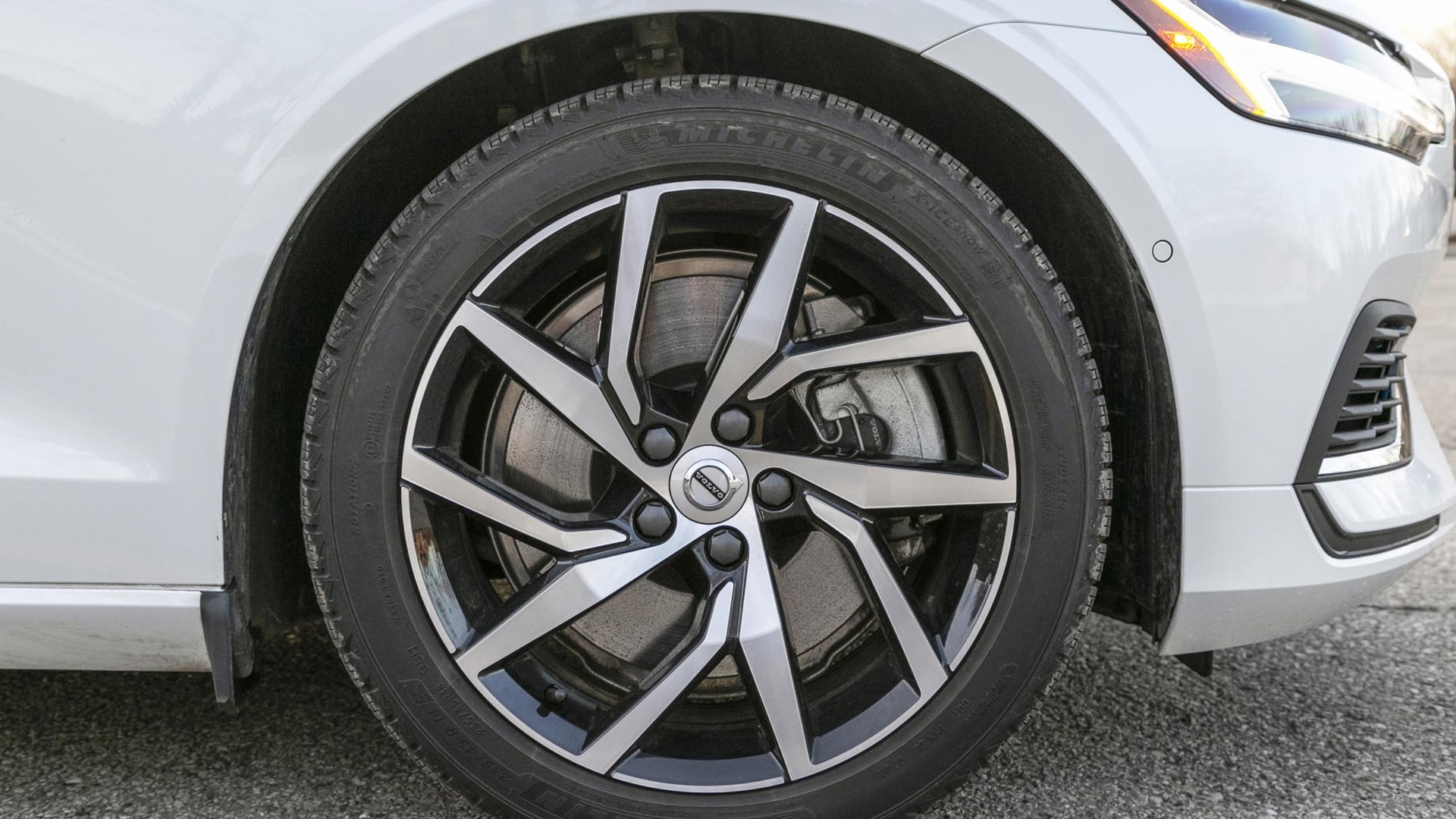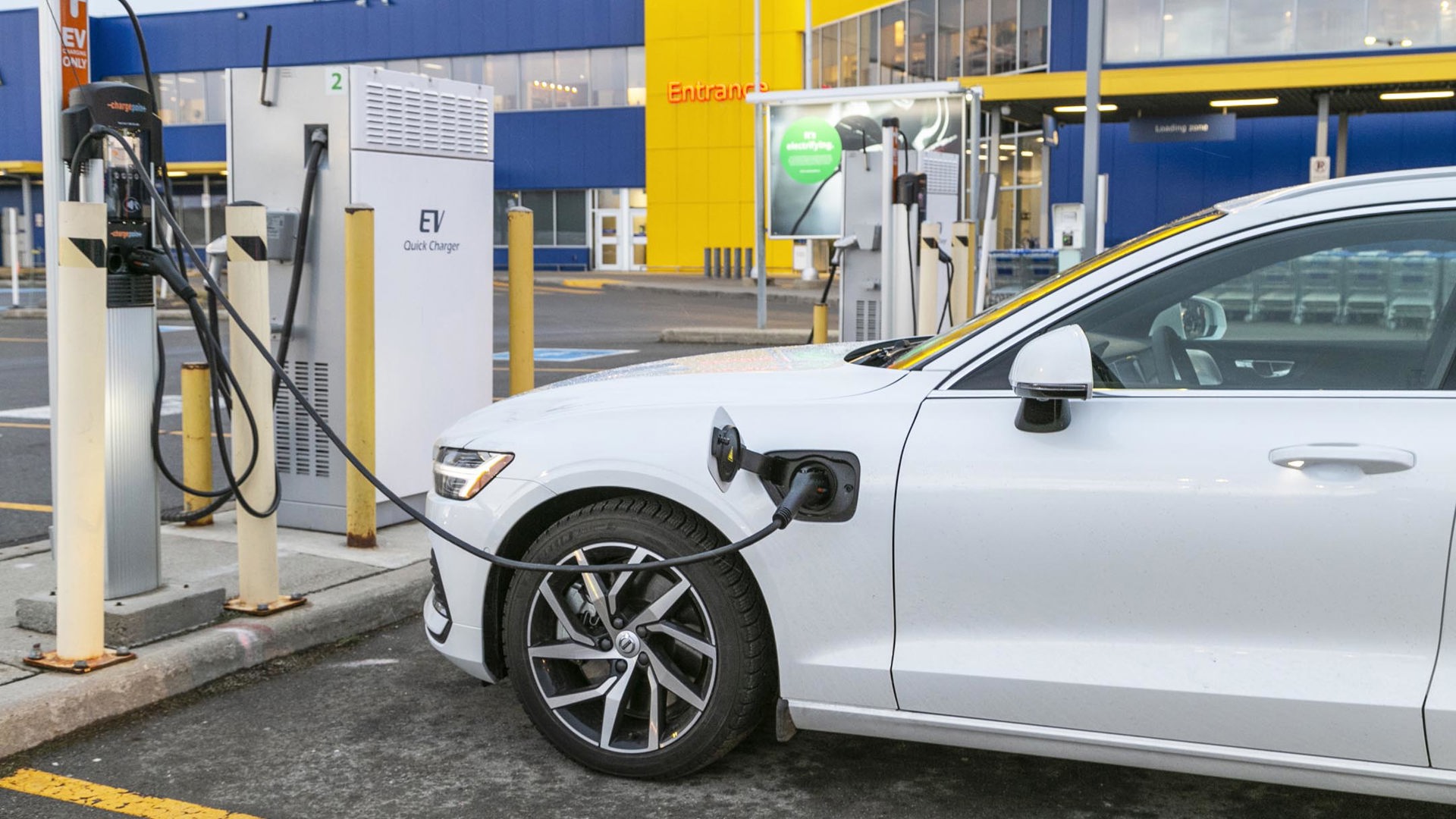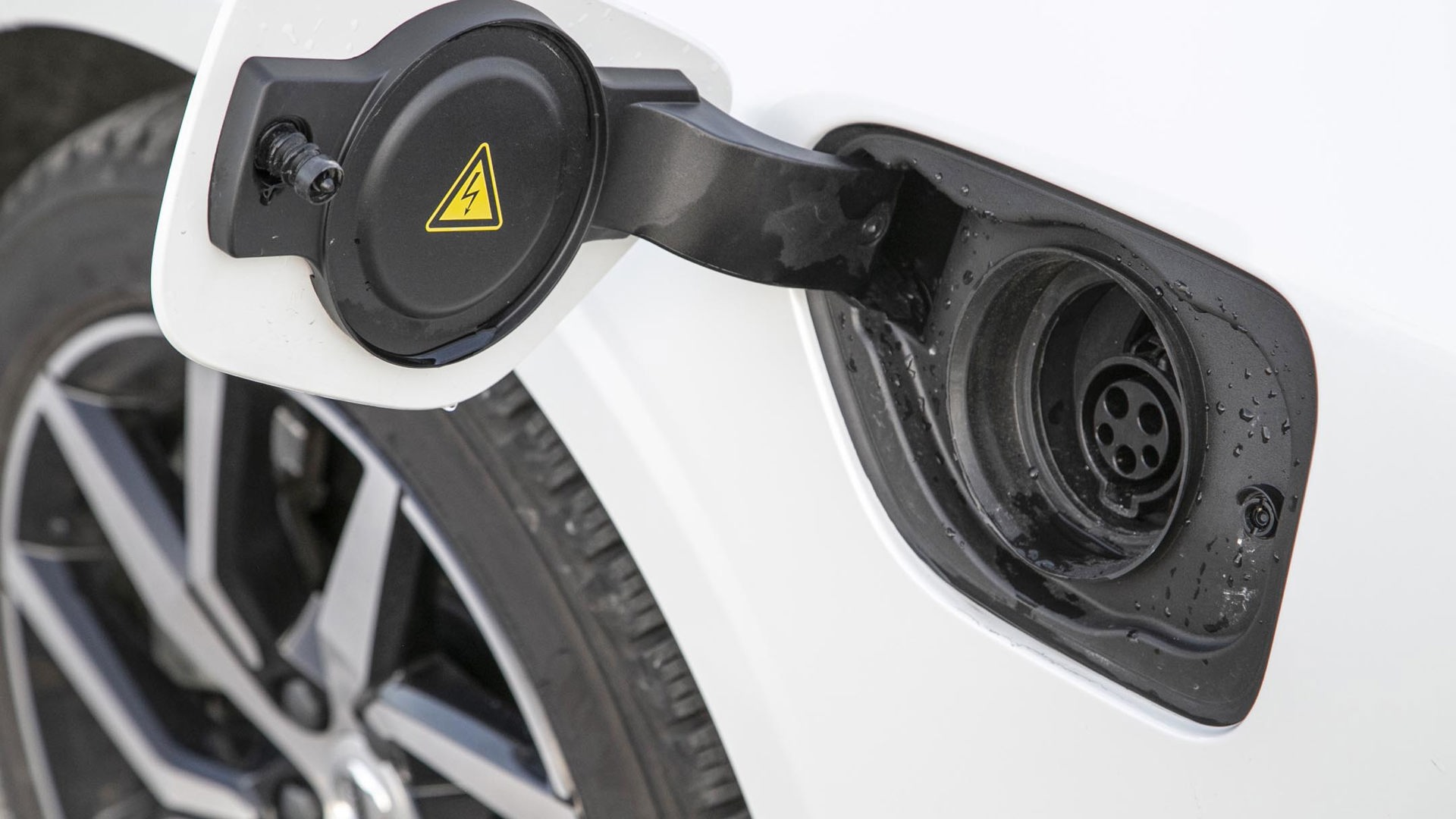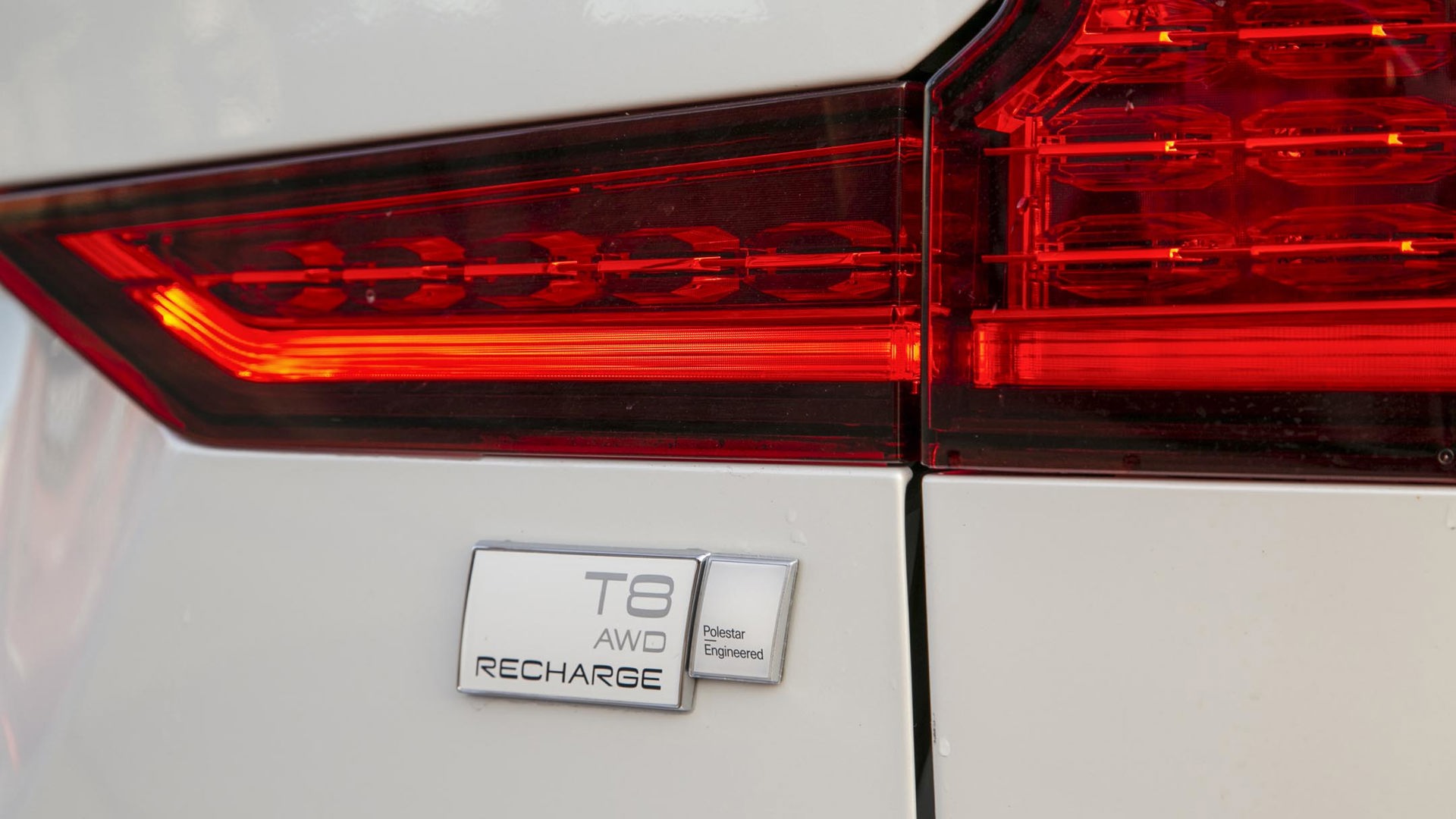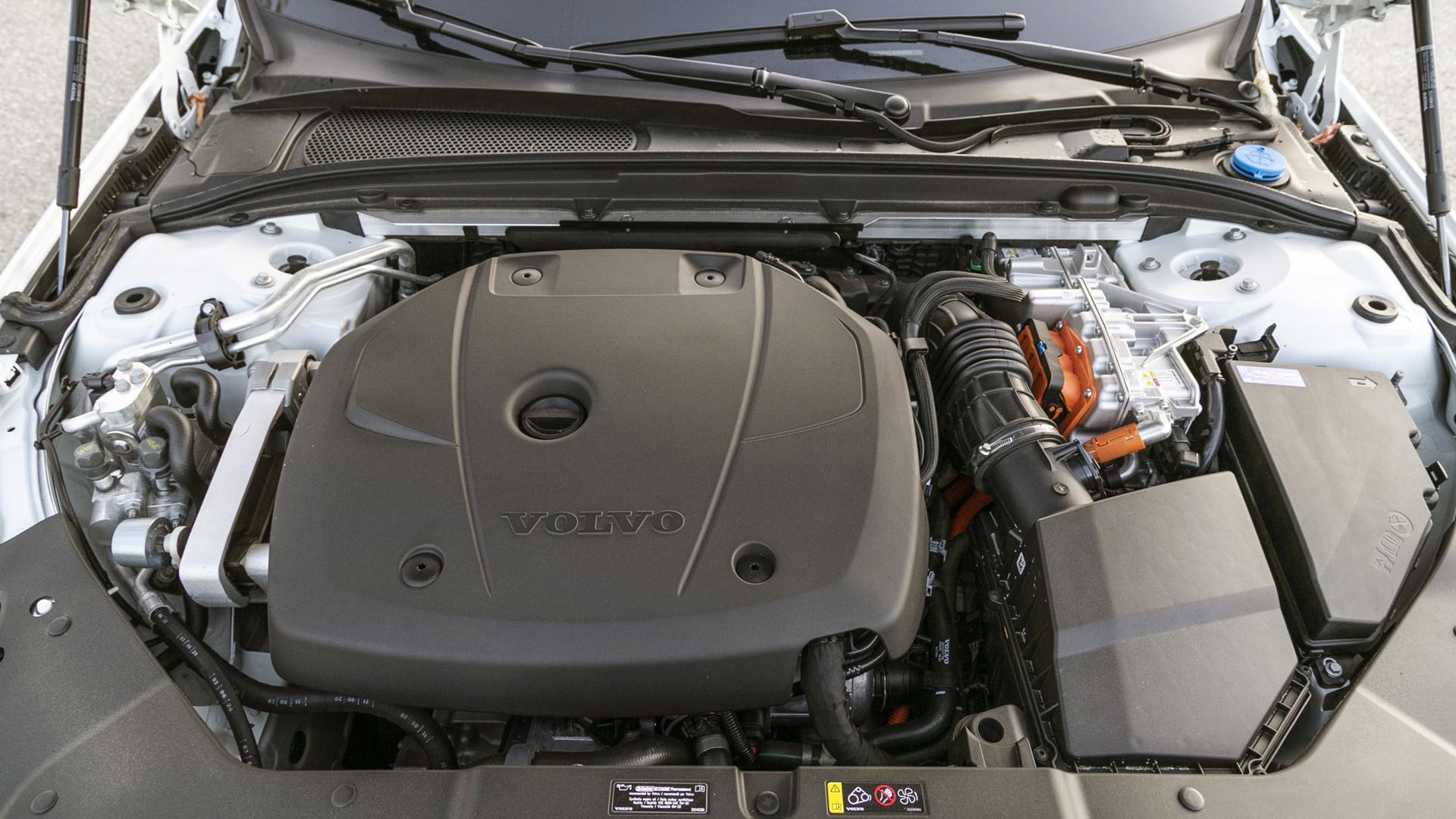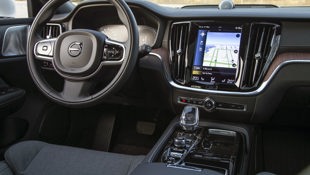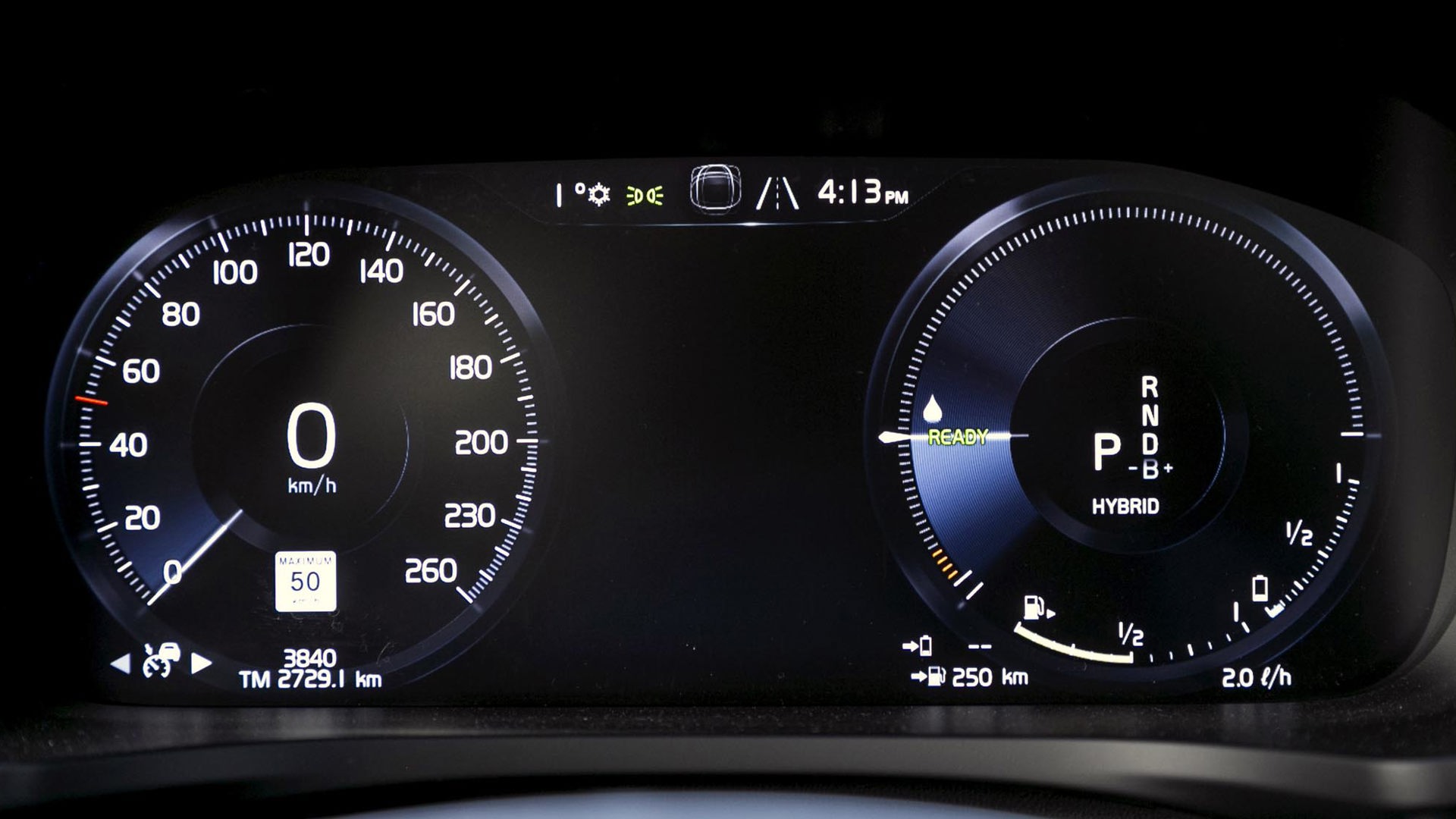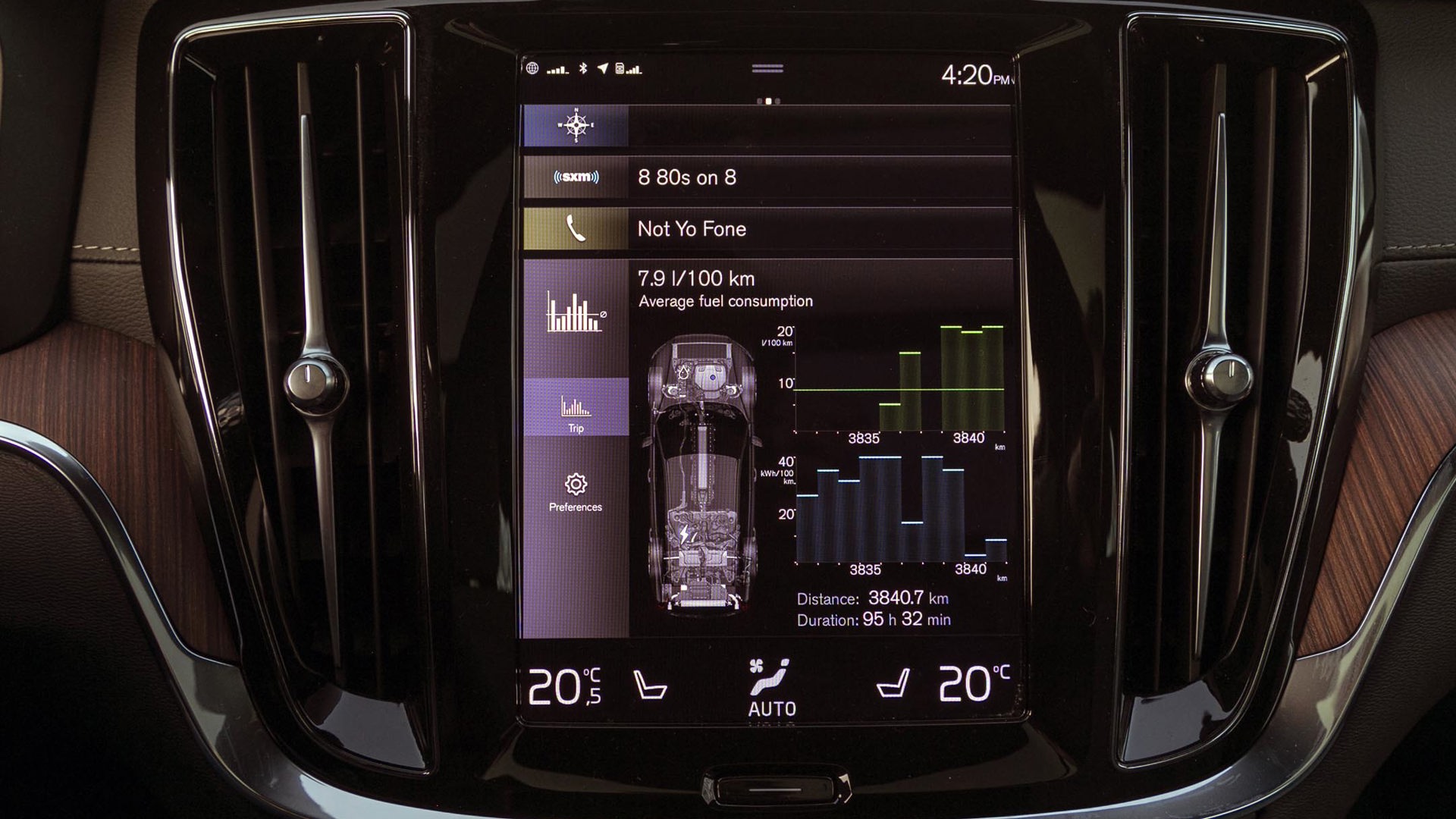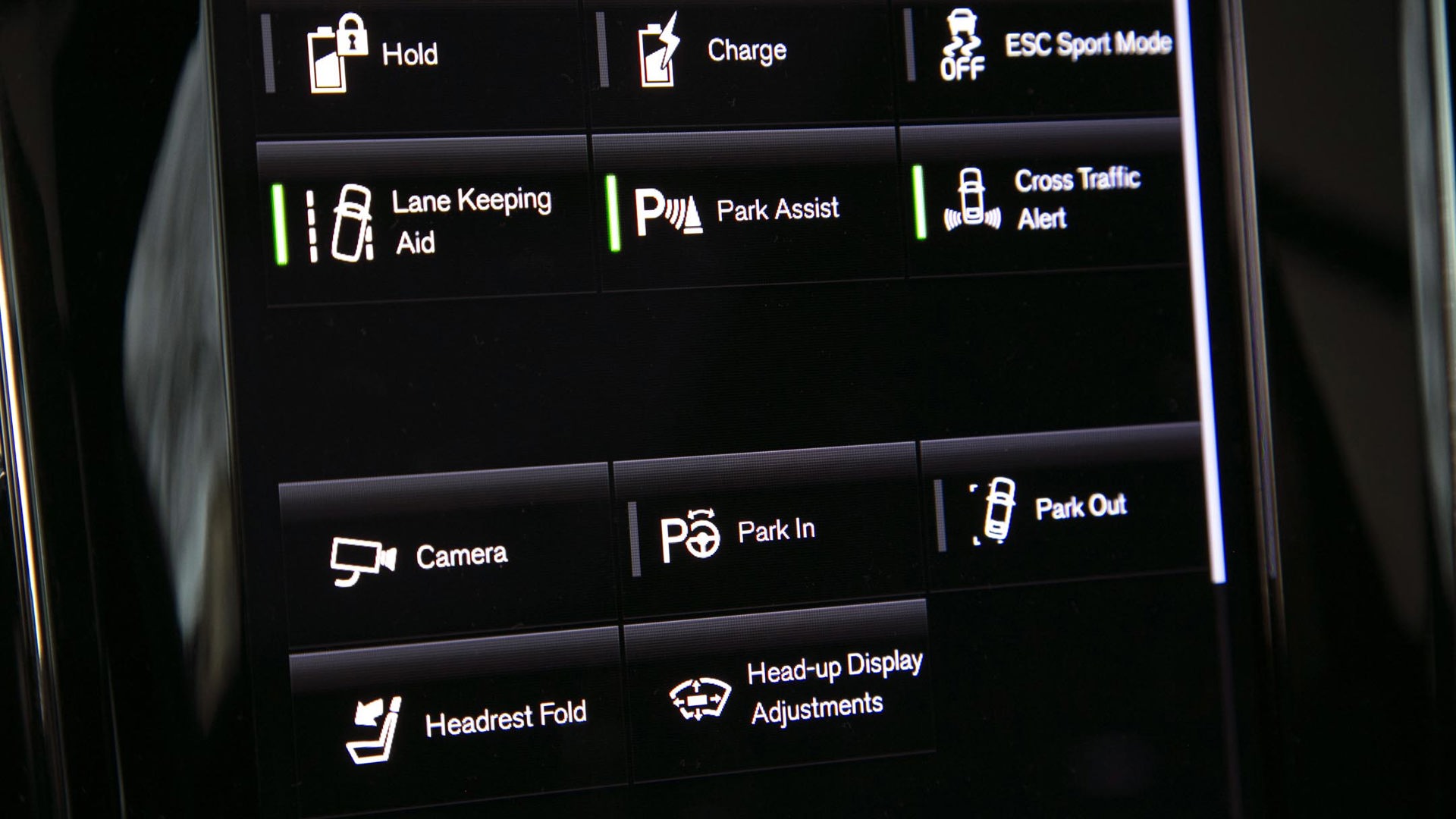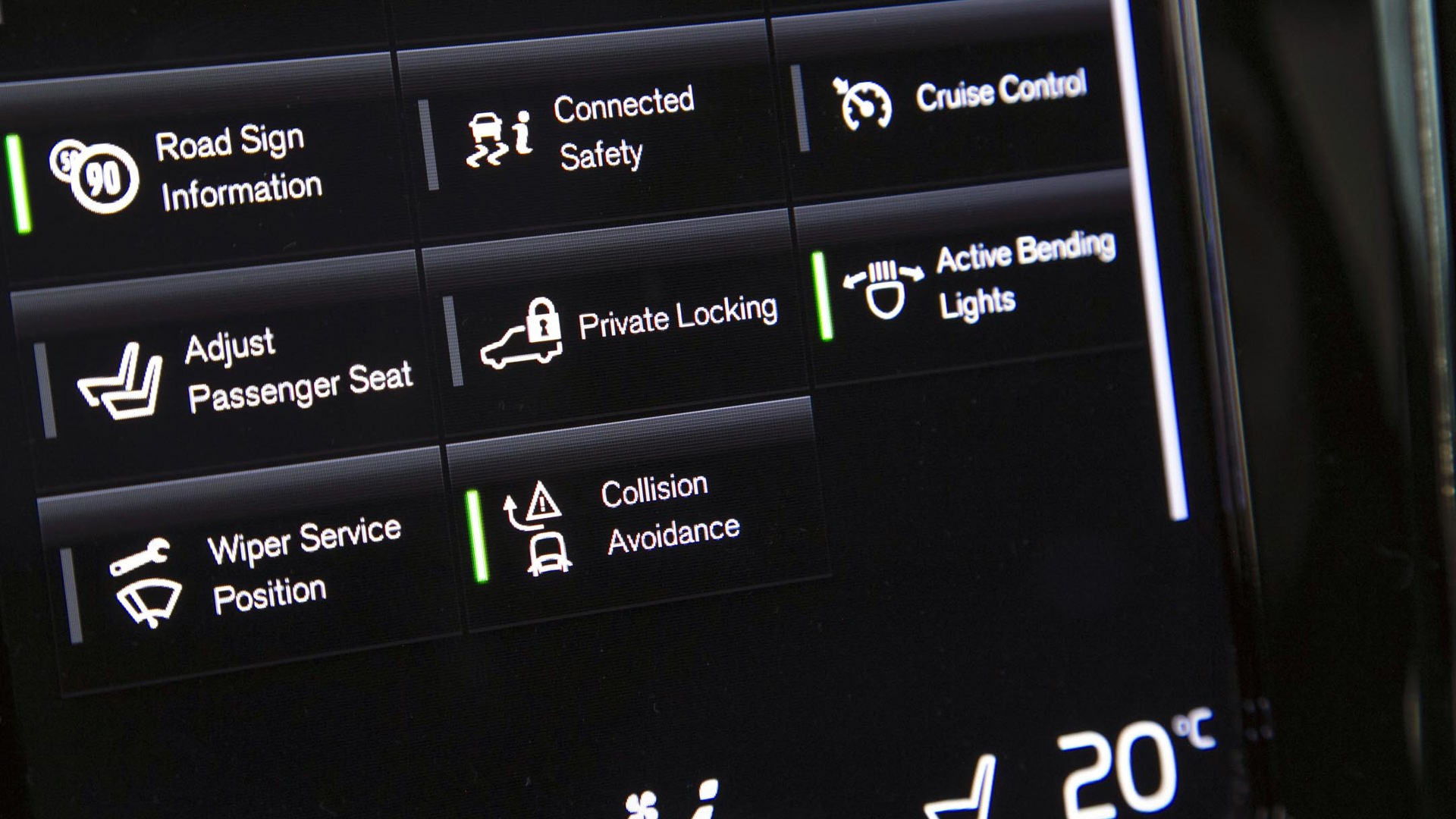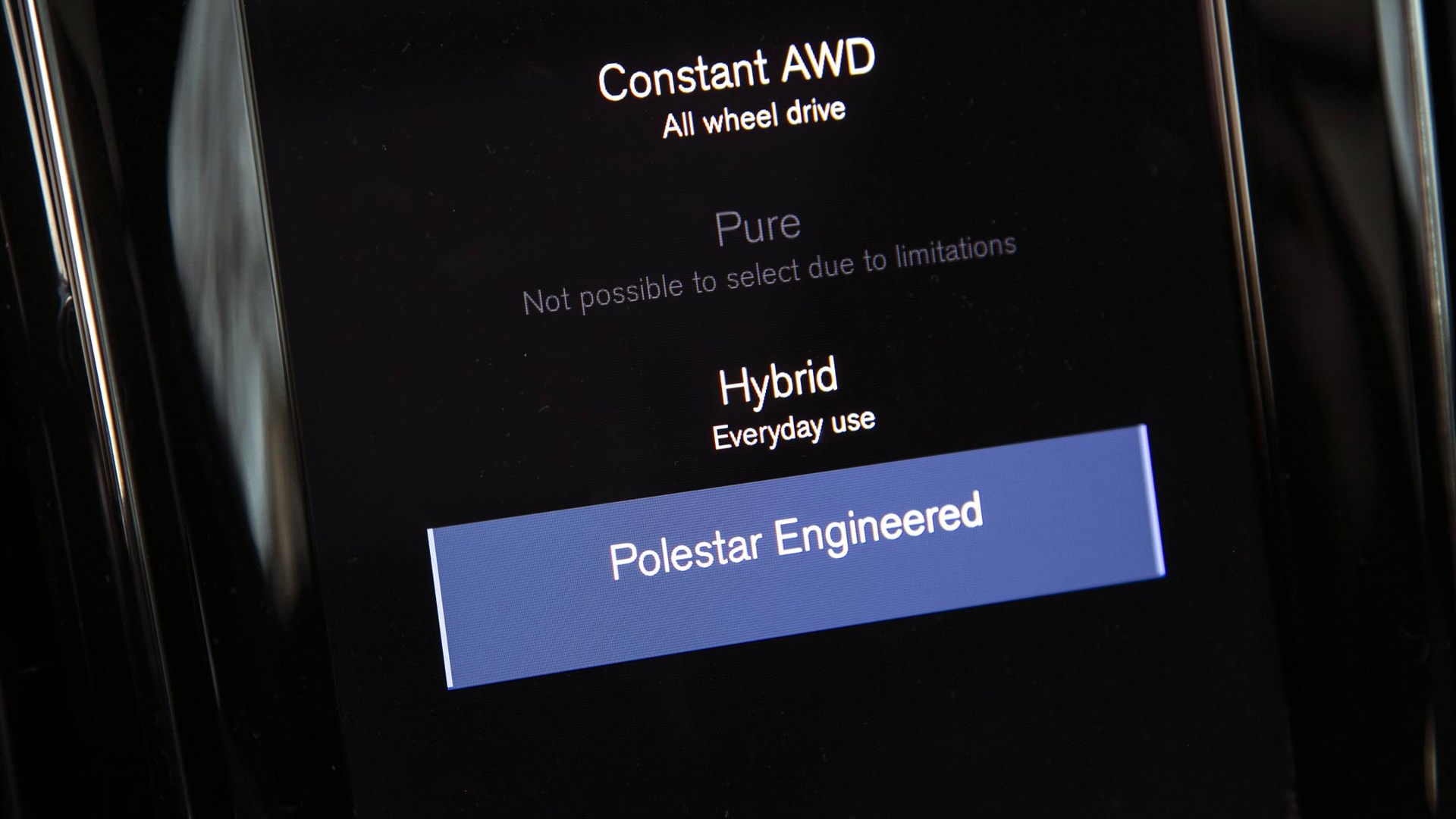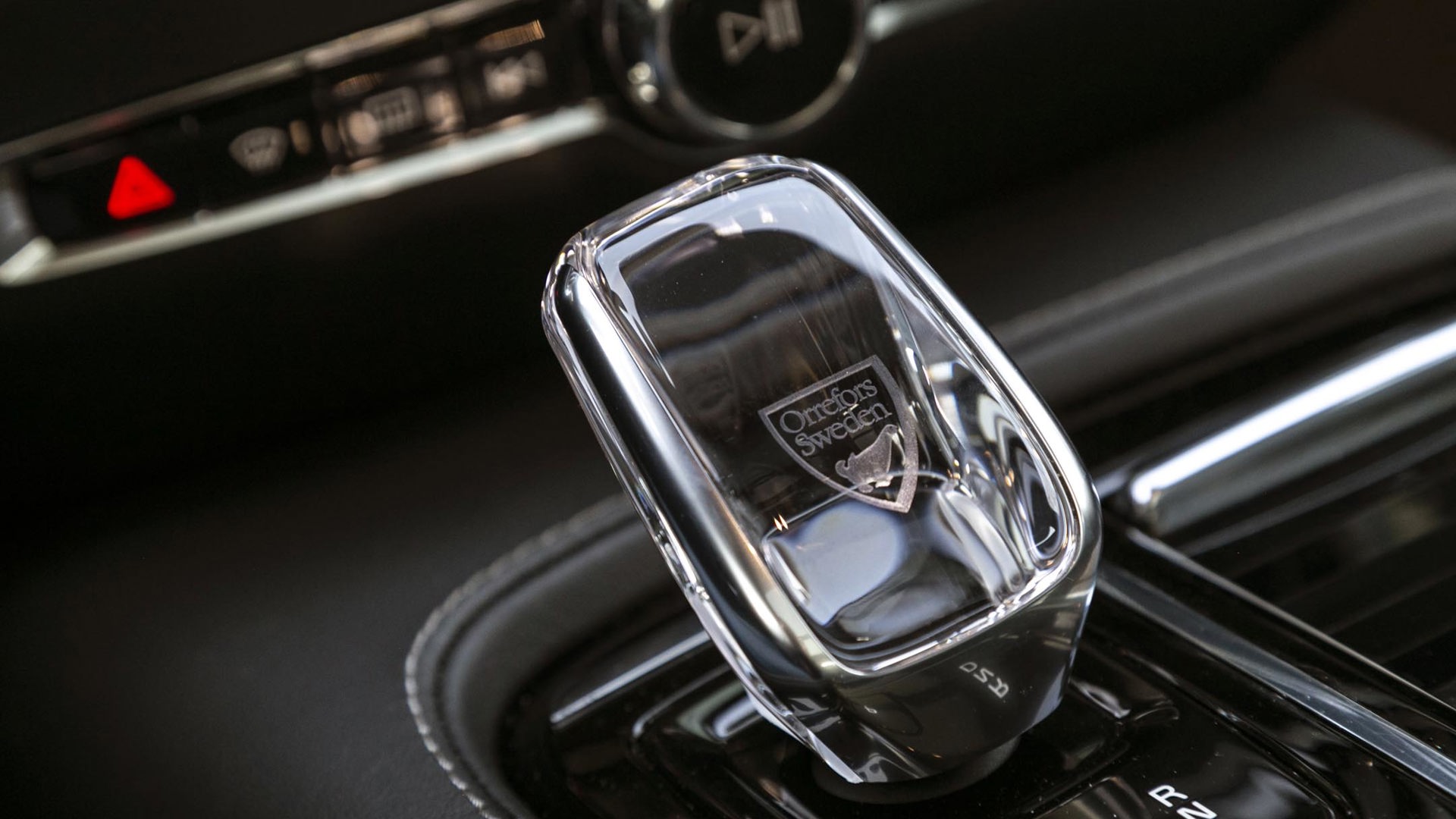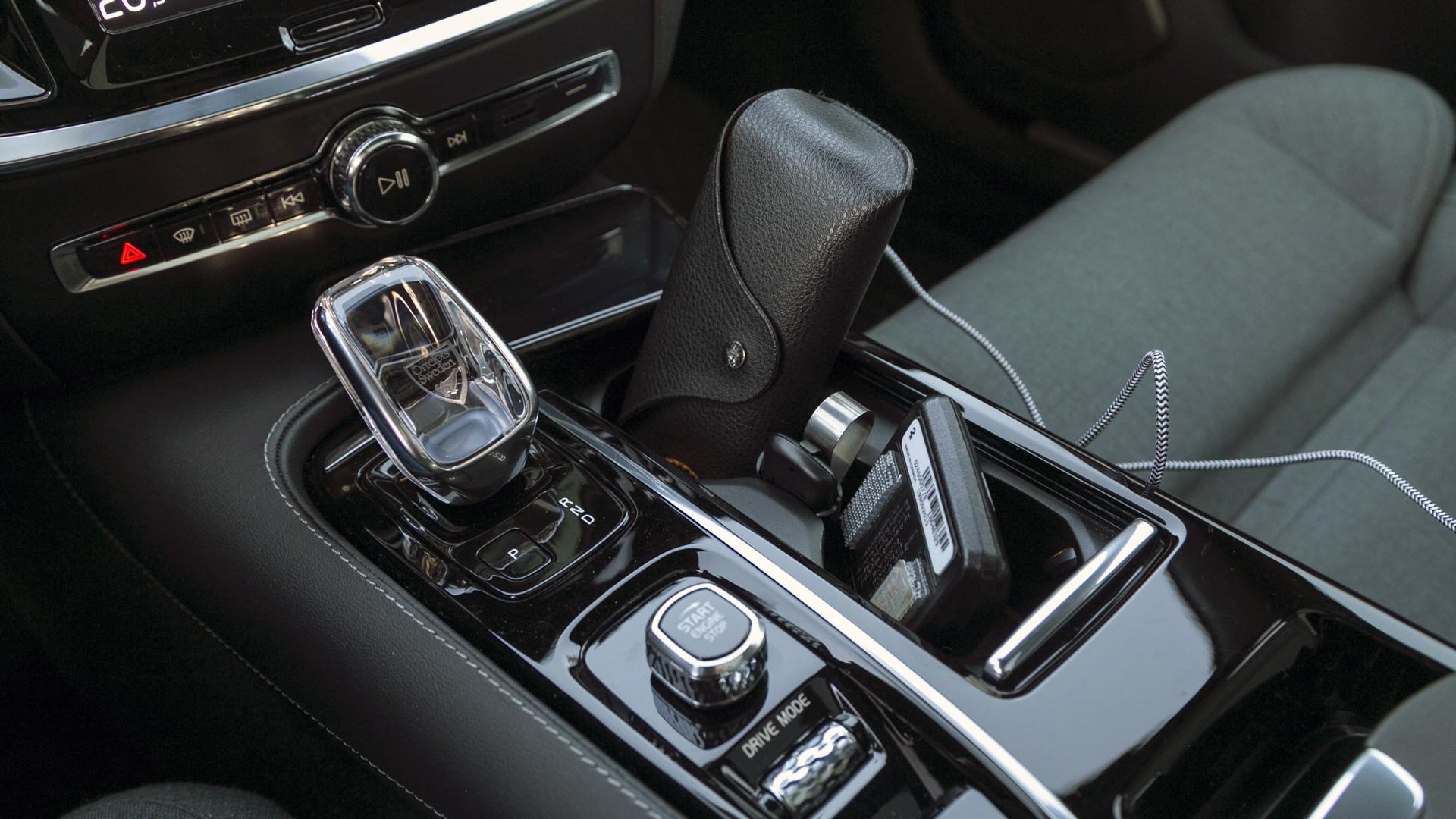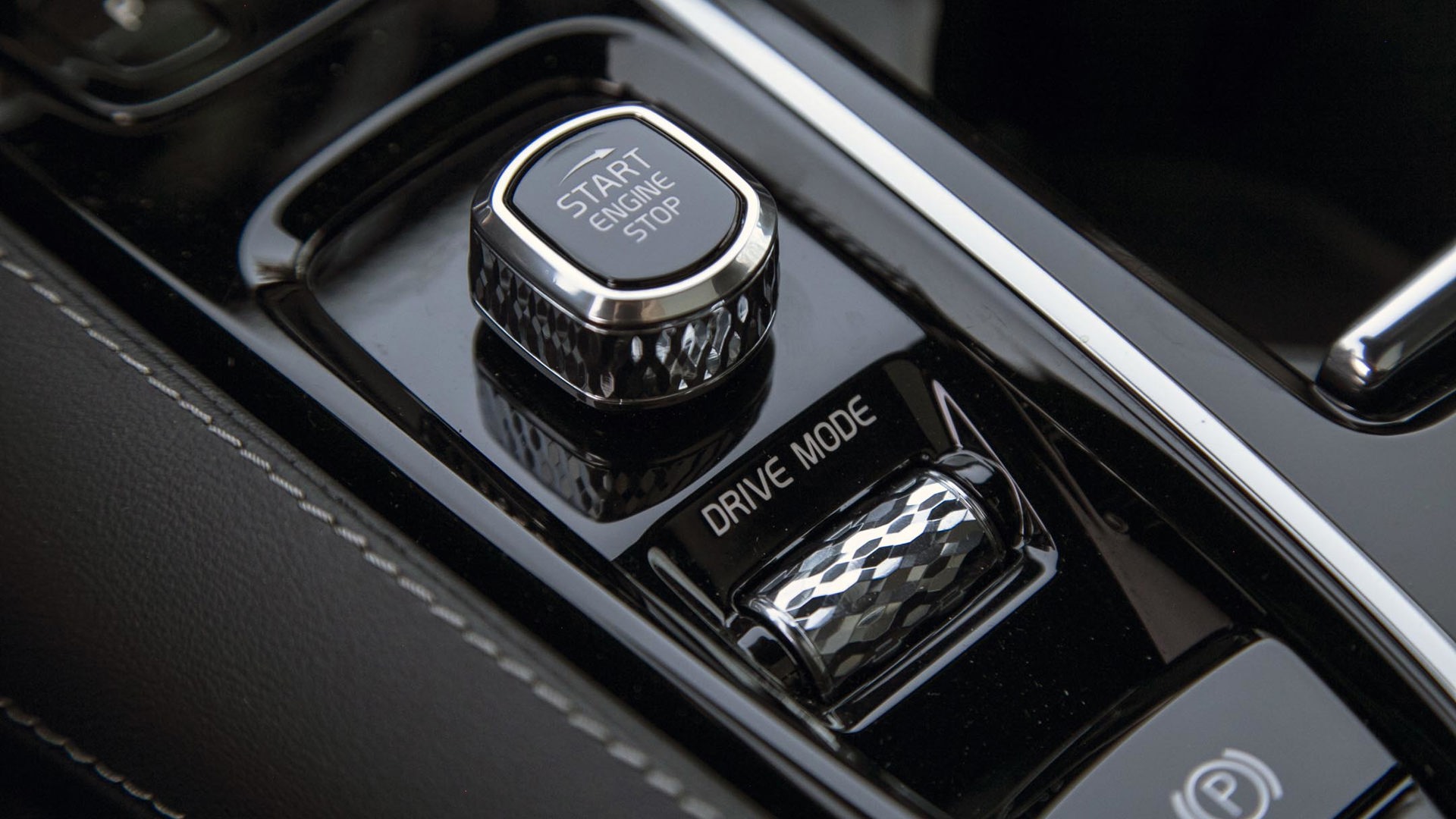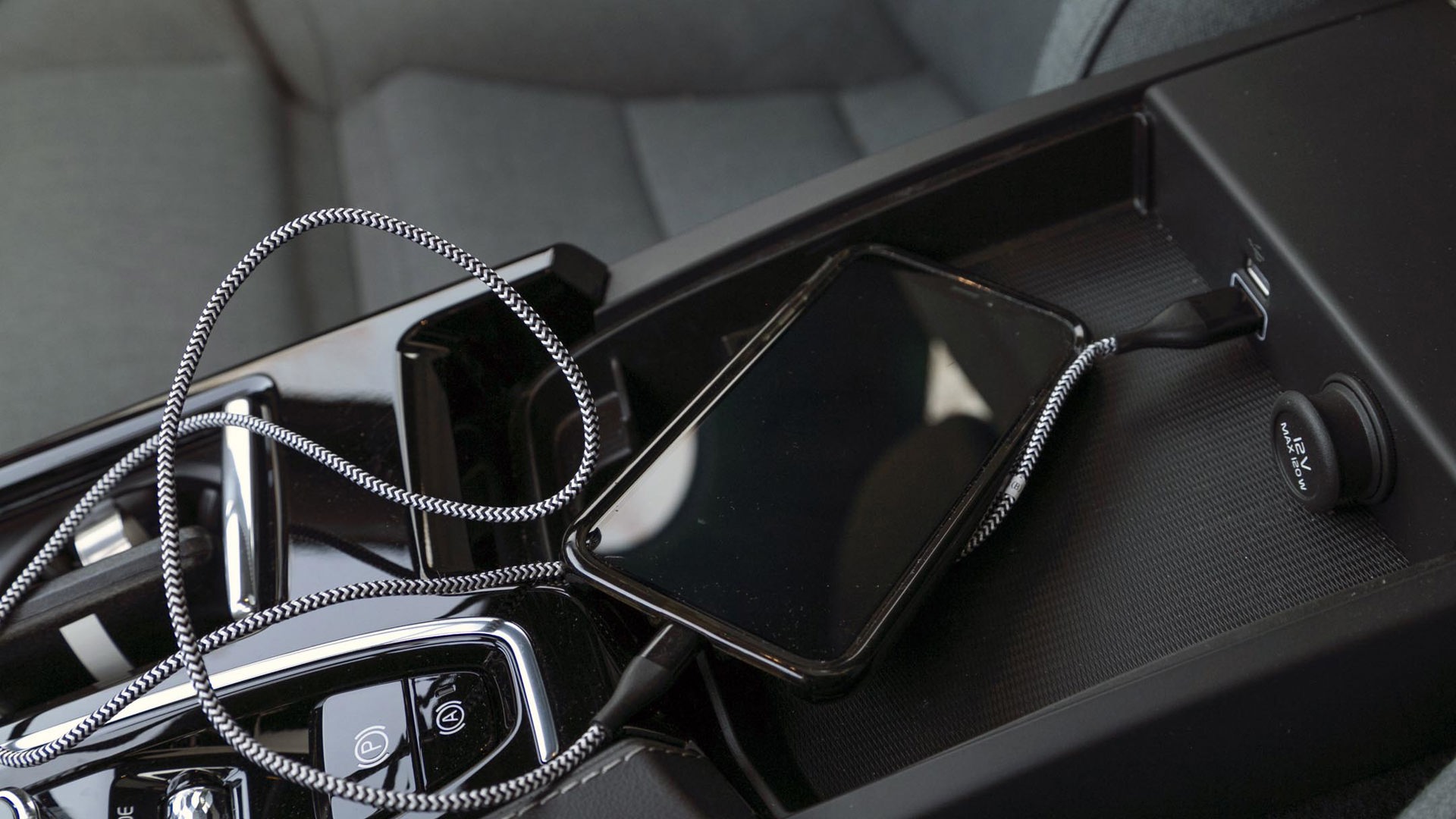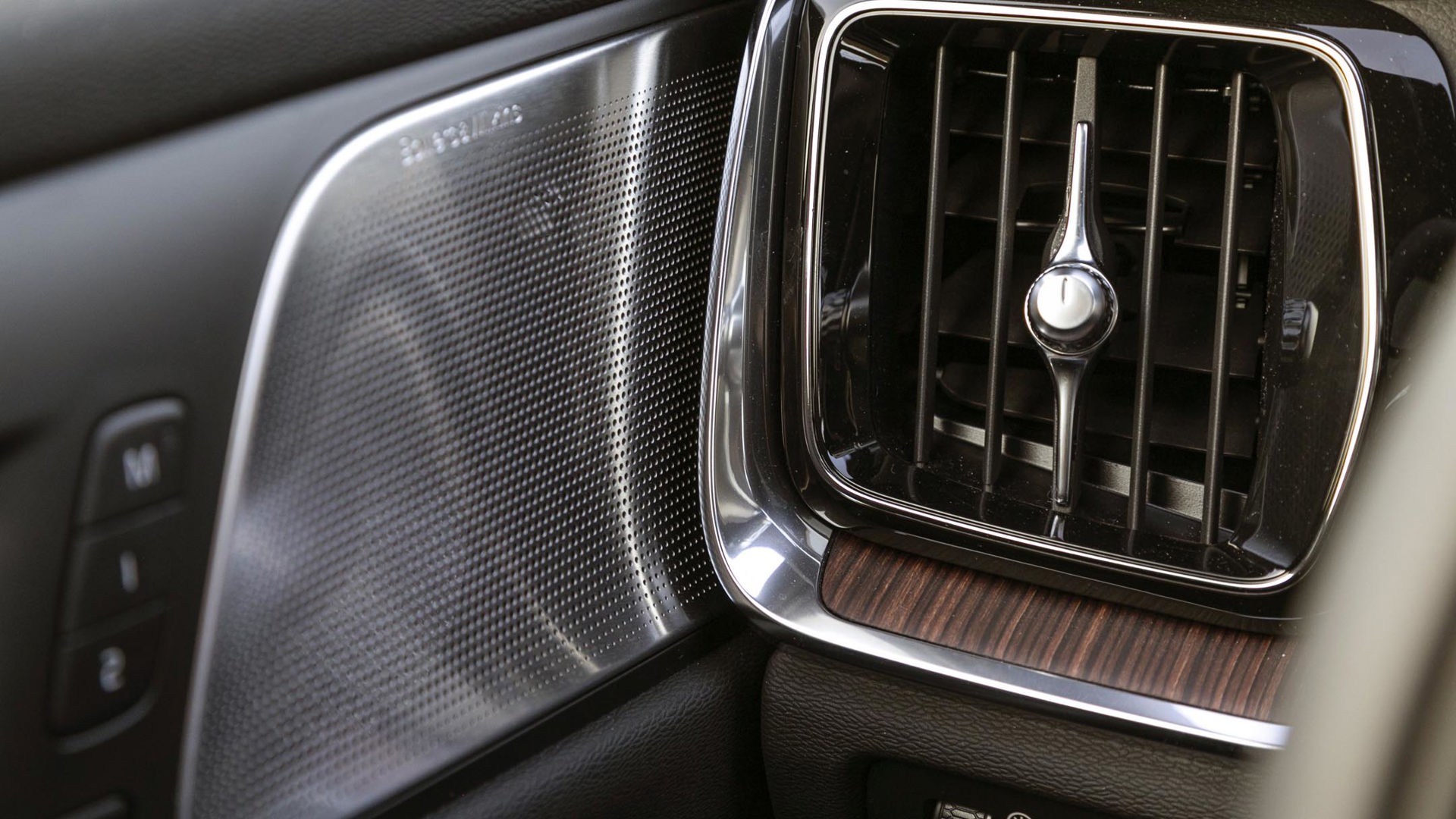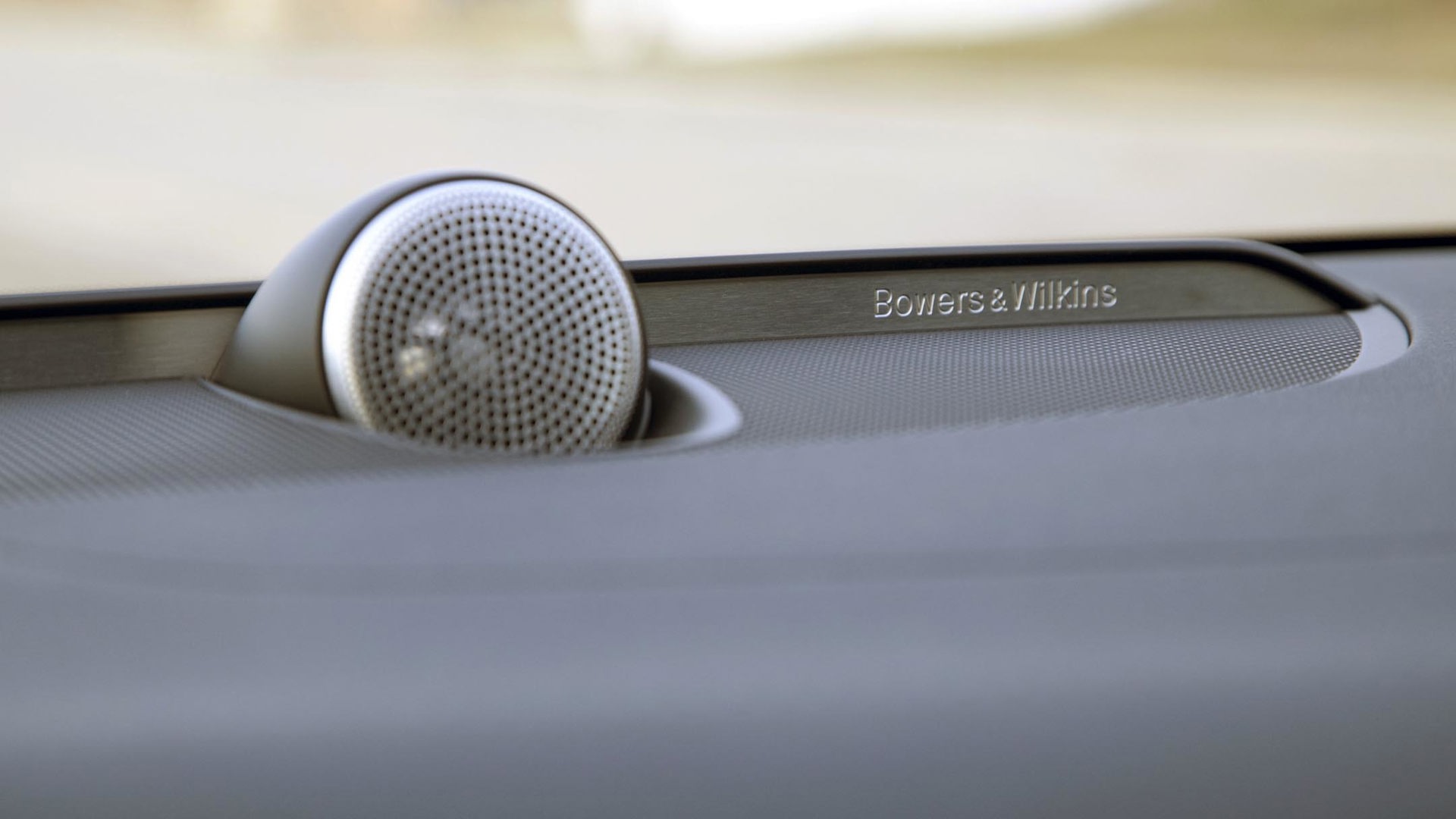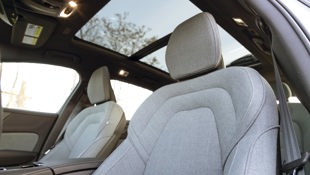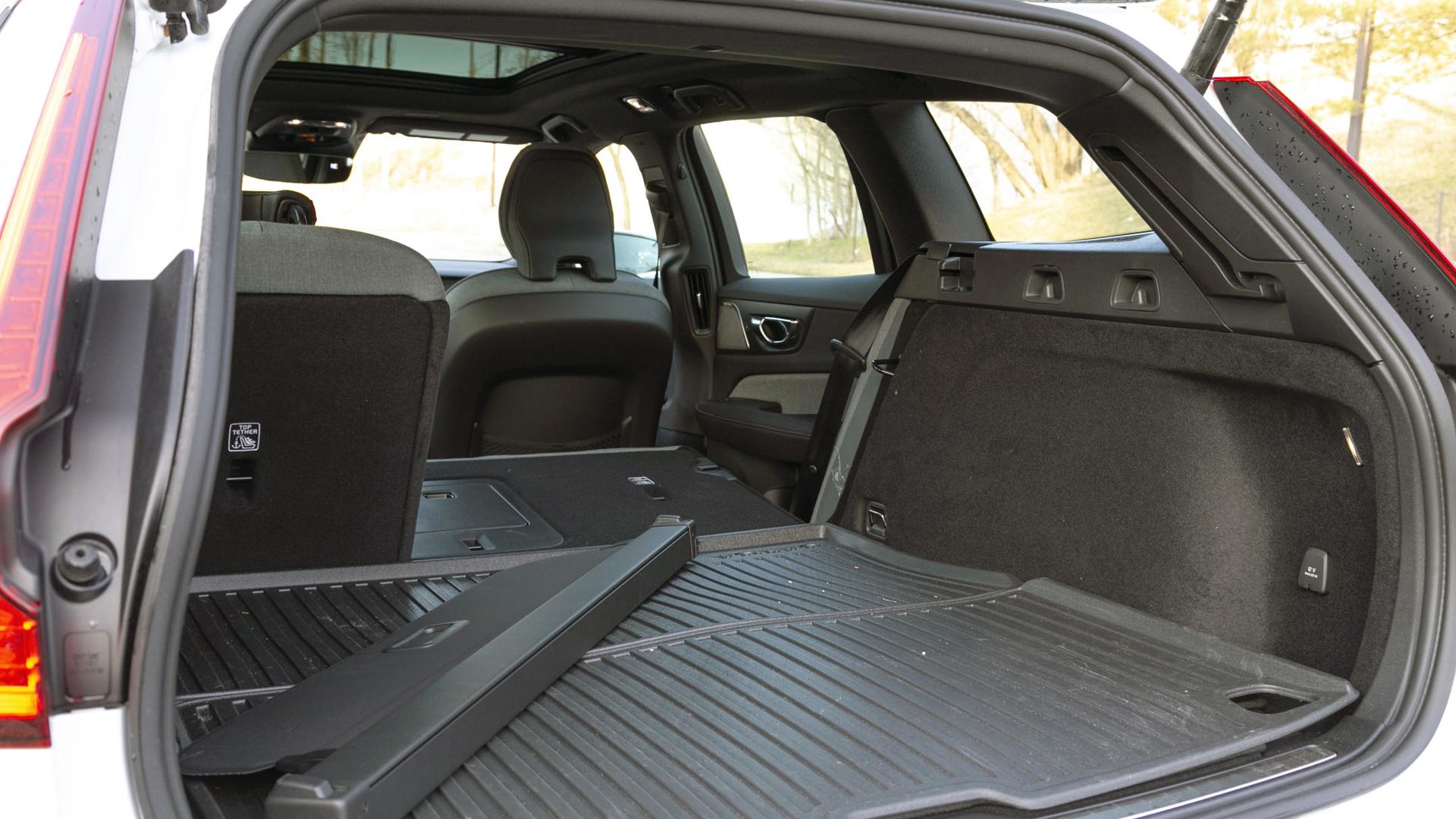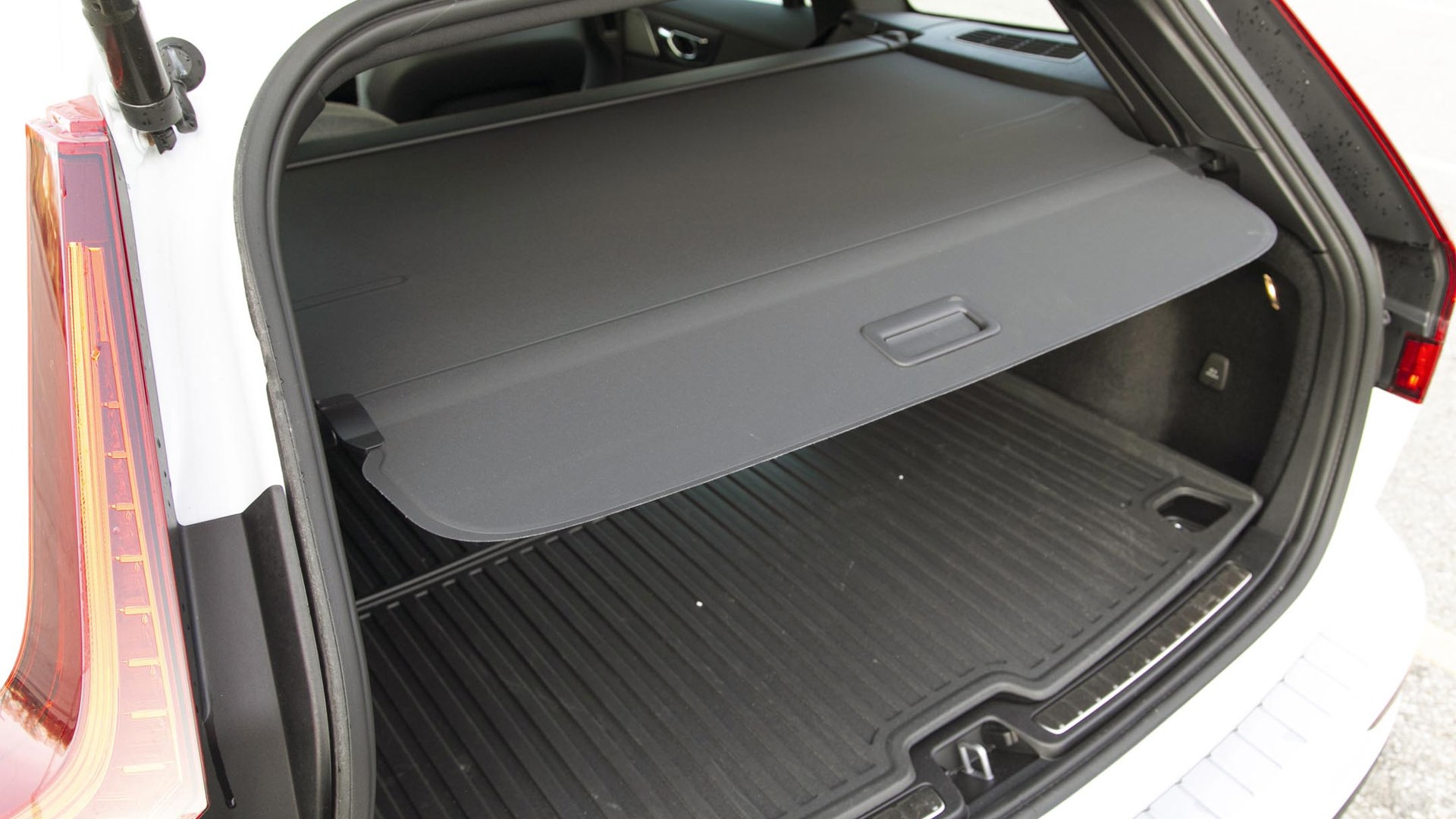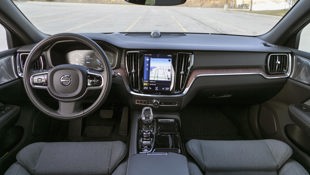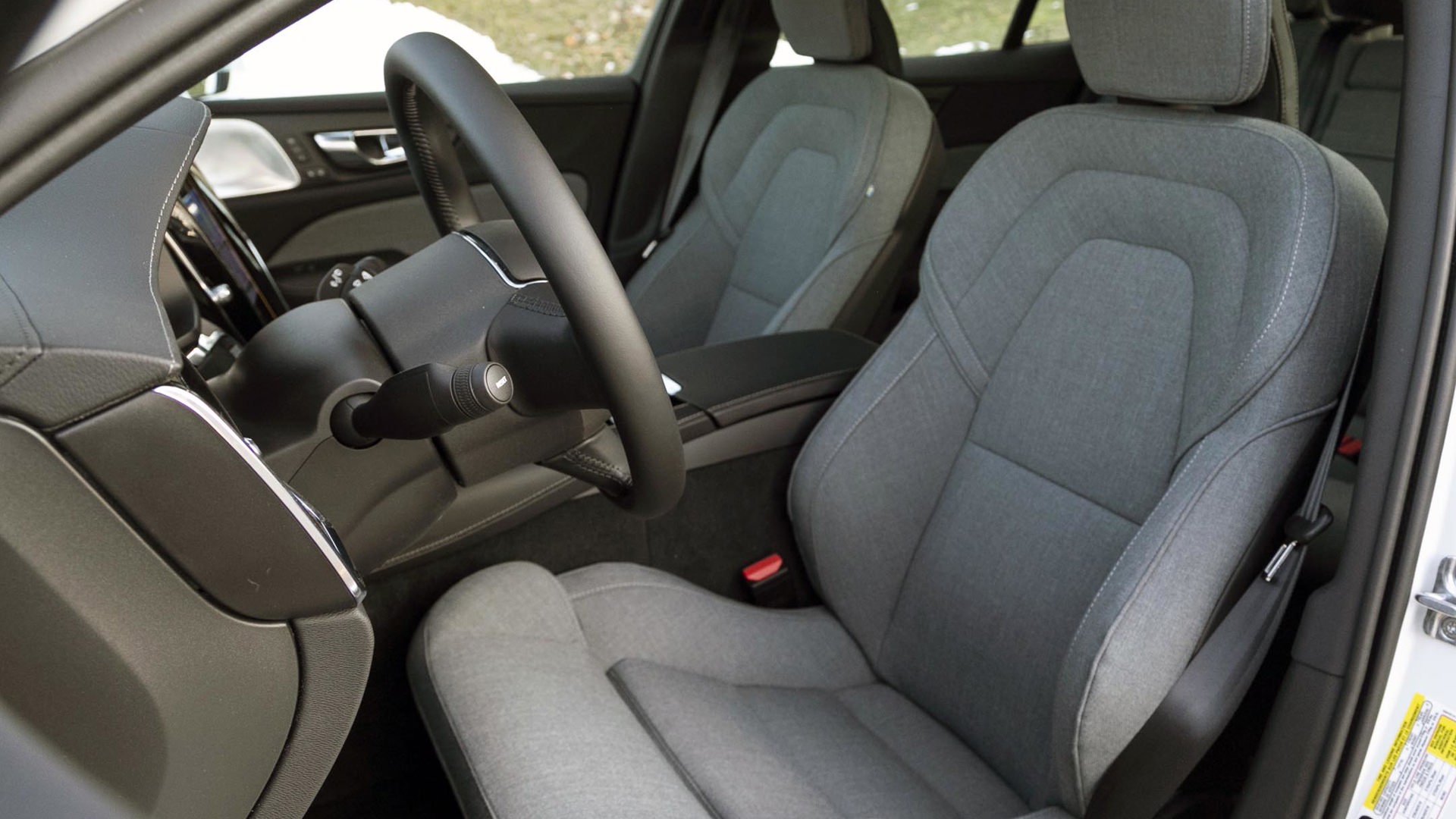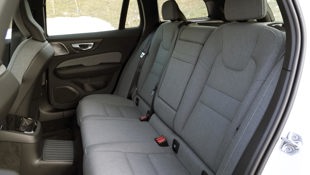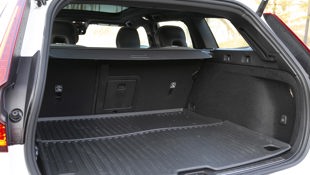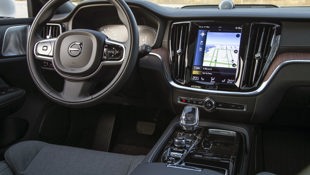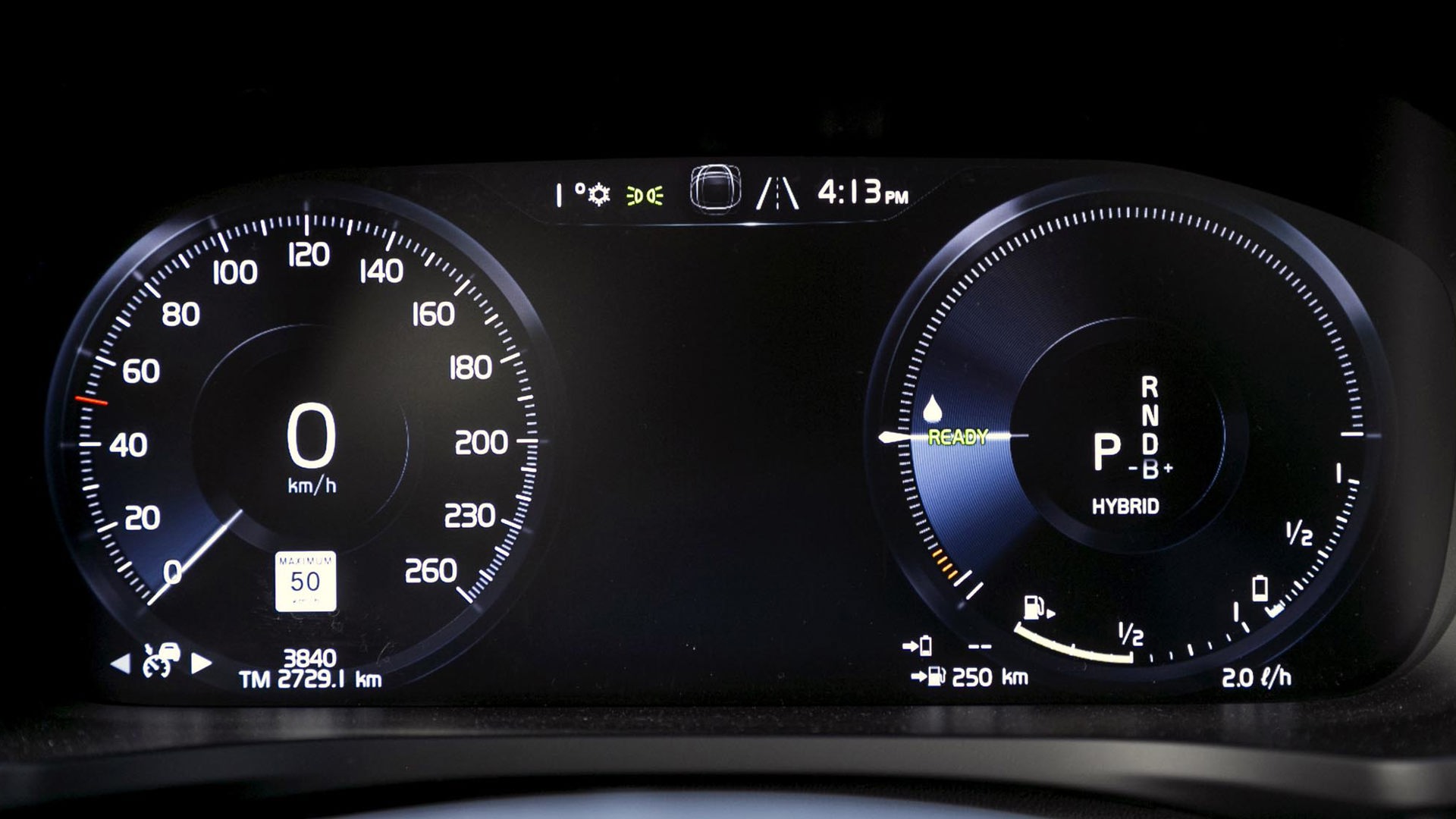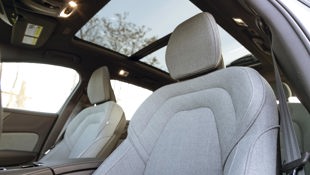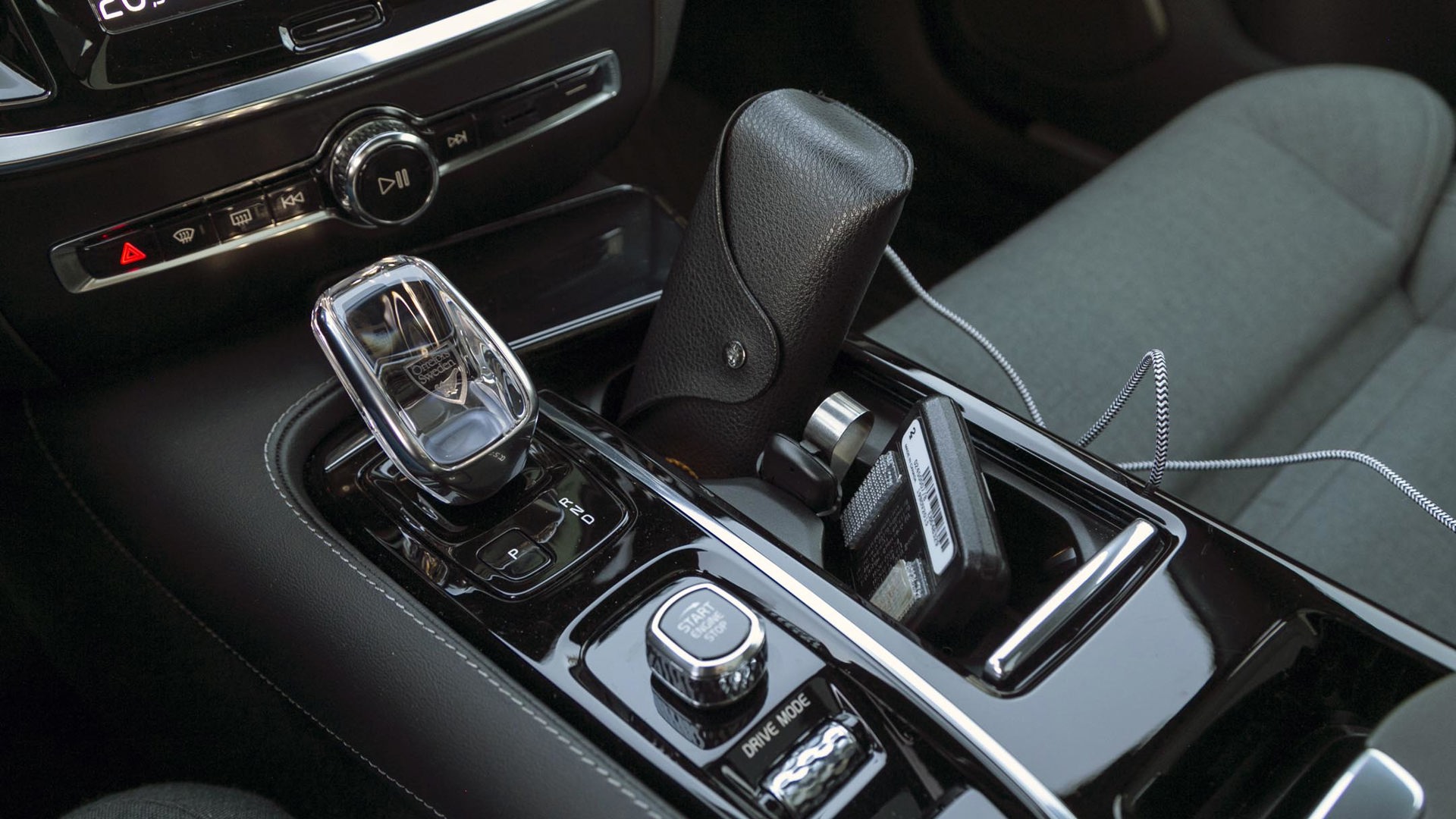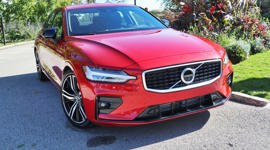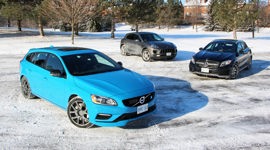 AutoTrader SCORE
AutoTrader SCORE
-
STYLING9/10
-
Safety9/10
-
PRACTICALITY7/10
-
USER-FRIENDLINESS6/10
-
FEATURES8/10
-
POWER8/10
-
COMFORT7/10
-
DRIVING FEEL6/10
-
FUEL ECONOMY8/10
-
VALUE5/10
You’ve really got to hand it to Volvo for its persistence.
While the market moves to SUVs at an ever-faster rate, those sassy Swedes keep cranking out more versions of the classic long-roof design, better known as the station wagon, and they’re doing a heck of a job of it.
To ensure its mid-size wagon stays relevant, the 2021 Volvo V60 comes in a plug-in hybrid (PHEV) variant that gets a generous power bump over the gas-powered version – but buyers should be prepared to pay big money to get it.
Styling: 9.5/10
There simply isn’t a bad angle to this car. While that’s a sentiment I usually reserve for the most sultry sports cars, Volvo’s V60 is about as sexy as a wagon can get. Show me an SUV that looks as sleek and posh as this long, low, and lithe Volvo – go on, I’ll wait. And while I’d prefer the chrome-free look of the Polestar version, this Inscription trim is decidedly upscale, and thanks to its distinctive LED lighting intended to look like Thor’s hammer, the V60 should never be confused for anything but a Volvo.
The V60’s interior is even more special. Clean and contemporary Scandinavian design language prevails, with vertical-striped lime wood trim accented by polished metal trim. The switchgear all feels premium, especially the twist-button starter and crystal shift lever on the centre console.
But it’s the optional grey wool seats that are artfully shaped and fashionably unique in the premium car market. Their look and feel reminds me of a fine sport coat, and while it’s unlikely to wear as well over time as leather would, it will surely breathe better on hot days than cowhide.
Power: 8/10
On paper, the V60 T8’s power bump over the non-electrified T6 is sensational. 400 hp and a whopping 472 lb-ft of torque are the result of combined gas and electric efforts. The little four-cylinder is supercharged and turbocharged, and on its own produces more than 300 hp, just as it does in the T6 models. The electric motor adds a peak of 87 hp and 177 lb-ft of torque to the party, which should help the V60 T8 feel like a rocket accelerating, but it doesn’t have the immediacy I had expected. This electrified wagon is certainly quick, though, and in Polestar drive mode it harnesses all the available thrust to launch the driver and their party toward the horizon with impressive urgency.
The thrill ride is over quickly, however, and as the revs climb the ferocity dissipates quickly. In Polestar drive mode, passing power is ample but it doesn’t feel near what one would imagine 400 hp to feel like in a mid-size car. What’s more, a swift stab of the accelerator doesn’t produce the instantaneous surge forward normally associated with electrified cars, instead pausing as if the supercharger, turbocharger, and electric motor need to sort out who’s doing what before reacting.
The transmission – an eight-speed automatic – is a worthy partner for daily commuting duties, but seems to falter when asked for an immediate downshift. There are no steering wheel paddle shifters to allow driver intervention, either.
Driving Feel: 6.5/10
The additional 230 kg (507 lb) added by the hybrid components doesn’t help the V60’s driving feel, reminding the driver that this isn’t a sports car. Still, the low centre of gravity and formidable all-wheel-drive traction doesn’t hamper the V60’s stability when asked to boogie on the backroads. But when it comes time to shave off some of the V60 T8 speed, the regenerative brakes provide a frustratingly non-linear pedal feel, with significant pressure required before any appreciable braking force applies. This results in a few hair-raising milliseconds when drivers accustomed to most modern braking systems will expect more initial bite.
Where other versions of the V60 and its S60 sedan counterpart fall short in steering feel, and here again with the T8, the electrically-assisted set up is an aloof and over-boosted affair. Despite the additional power, the significantly lighter V60 T6 is more fun to drive without giving up much in pace.
Fuel Economy: 8/10
Although the hybrid powertrain helps the V60 T8 accelerate quicker, its primary purpose is to help save the planet with reduced fuel consumption and emissions. The T8 achieves that in both regards, but not as much as hoped. At highway speeds, the electrified V60 offers a negligible 0.4 L/100 km improvement compared to the gas-only V60 T6’s respectable 7.4 L/ 100 km.
It improves notably in town, where the 8.4 L/100 km rate is quite good for a mid-sizer, bettering a BMW X3 plug-in hybrid, though the larger Lexus RX 450h conventional hybrid is better still by nearly 1.0 L/100 km.
If a buyer’s urban commute is short enough, the fuel savings could be improved with the V60 T8 being able to travel as much as 35 km on battery-power only, but with winter tires and all the heated accessories on, I was lucky to see 25 km of pure battery distance per charge during testing.
Value: 5/10
Although the V60 T8 Inscription is a well-equipped and luxurious car, its starting price of more than $70,000 puts it up against some heady SUV competition, and there are two competitors in particular that make the V60 T8 a tough sell. The first is the Tesla Model Y that’s comparable in size yet offers the full-electric experience and a 525 km range for essentially the same money.
For buyers hell-bent on a stylish wagon, Volvo’s own V60 T6 Inscription compares feature-to-feature with the T8 except for the hybrid system and costs $14,000 less. That much money at current fuel costs would take an owner almost 30 years of mixed highway and city driving to realize any financial benefit of the hybrid. Even if the typical driver’s 24,000 km per year were done only in the city it could still take nearly 18 years to pay off that electric motor and battery pack. And these calculations don’t factor in the cost of electricity required to charge the T8’s battery pack.
Features: 8.5/10
The V60 in Inscription trim is a proper luxury car offering the amenities buyers expect in this class. Features like a panoramic sunroof, heated seats and steering wheel, and ventilated front seats are all standard equipment. My tester was also optioned up with an Advanced package that includes a head-up display and Volvo’s advanced adaptive cruise control system that helps keep the car within its lane and at a safe distance from the vehicle ahead of it in traffic. There’s a brilliant-sounding upgraded sound system for an extra $3,750 here, too.
Volvo also offers an air-cleaning system that filters out as much as 95 per cent of the fine particulate matter that measure 2.5 micrometres or smaller that the World Health Organization (WHO) has deemed to be particularly harmful to humans. The system can be set to run remotely before the driver enters the car, ensuring a clean-air cabin upon entry, and possibly making the V60 one of the best places to self-isolate in these pandemic times.
User Friendliness: 6.5/10
Volvo uses a vertically oriented nine-inch touchscreen with crisp and bright graphics that resolves the 360-degree image from external cameras remarkably well. It’s set up to operate like a personal tablet or smartphone, with pinch-squeeze-swipe functions and works fairly well with a little bit of practice. However, there is a lot of information presented to the driver at any time, and it can become a distraction when simple controls like adjusting the seat heaters require taking attention away from the road to sift through a few screen touches.
Comfort: 7.5/10
For decades, Swedish cars have come to be known for their highly comfortable seating. The size, shape, and bolstering of the V60’s seats are excellent, with adjustability to under-thigh length, ensuring even those with long legs can still get proper support. The foam inside the seats is very firm, however, and while they feel great for posture, they’re not exactly supple – like a visit to the chiropractor versus a massage therapist. Rear seats are heated, and there is ample space for a pair of adults, or a trio of kids, with abundant head- and legroom for such a sleek-looking wagon.
My V60 came with the optional adaptive suspension that ranges from firm in the default hybrid drive mode to downright hard in Polestar mode. For grand touring, some buyers may wish for a softer ride option.
Practicality: 7/10
Besides style, the best argument for a modern wagon like the V60 versus a similarly priced crossover is its lower centre of gravity that enables better handling without giving up its practical, hatchback format (or all-wheel-drive traction, in this case). That’s true of the V60 for the most part, with its spacious interior and decent handling. With the rear seat up, the V60 provides greater cargo room than its Volvo XC60 sibling, but folded flat, the taller SUV offers more space. With the seats up or down, Volvo’s wagon is more spacious than a competitive Mercedes-Benz C-Class wagon, but both the Tesla Model Y and BMW X3 plug-in hybrid trump the V60 for cargo space.
The biggest complaint about the V60 T8’s practicality is its lack of usable storage for the driver’s essentials. Without the usual cubbies, nooks, or even a centre console bin large enough to hold my phone, the cupholders ended up being a receptacle for sunglasses, toll road transponder, and garage door opener. A small elasticized net near the front passenger’s knee is all that’s offered to hold a phone.
The V60 is rated to tow 750 kg (1,653 lb), where most of the crossover competitors will haul at least double that amount, so the standard roof rails might be useful to affix a cargo box for bigger trips.
Safety: 9.5/10
Unsurprisingly, the V60 upholds Volvo’s reputation for building safe cars. Beyond the usual rock-solid structure of the V60 and a myriad of airbags, Volvo includes a comprehensive list of active safety functions like automated braking and emergency steering assistants to keep occupants out of harm’s way. While these advanced features are becoming common even on very affordable cars, Volvo’s dedication to safety shows up in other places, too, like the steering-responsive LED headlights, or the heated windshield wipers with integrated washer jets that spray consistently as the wiper sweeps.
The Verdict
The Volvo V60 T8 is a great car, and the automaker should be applauded for staying true to the wagon format. The level of technology and complexity in this PHEV version is remarkable, yet it all comes together in a very attractive and practical package, albeit a very costly one. With all-electric options offering even greater practicality for roughly the same price, it’s a tough sell, though, and unless a driver’s daily commute is a very short urban one, the non-hybrid V60 T6 represents a better value and is more fun to drive.
| Engine Displacement | 2.0L |
|---|---|
| Engine Cylinders | Supercharged Turbo I4 Hybrid |
| Peak Horsepower | 400 hp @ 6,000 rpm |
| Peak Torque | 472 lb-ft @ 2,200 rpm |
| Fuel Economy | 8.4 / 7.0 / 7.8 L/100 km cty/hwy/cmb; 3.2 Le/100 km cmb hybrid; 35 km electric-only range |
| Cargo Space | 657 / 1,441 L seats down |
| Model Tested | 2021 Volvo V60 T8 eAWD Inscription Recharge |
| Base Price | $71,100 |
| A/C Tax | $100 |
| Destination Fee | $2,015 |
| Price as Tested | $83,865 |
|
Optional Equipment
$10,650 – Climate Package, $1,000; Advanced Package, $2,400; Metallic paint, $900; Four-C Chassis, $1,000; B&W Premium Sound, $3,750; Park Assist Pilot, $250; 19" wheels, $1,000; Air Quality System, $350
|
|
